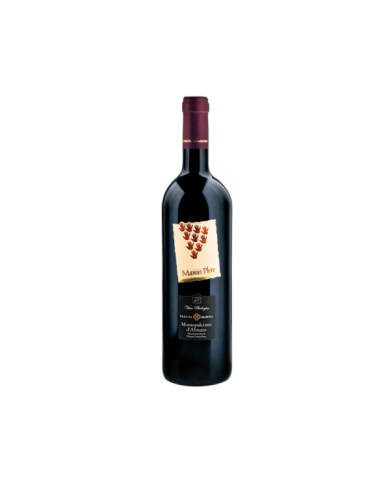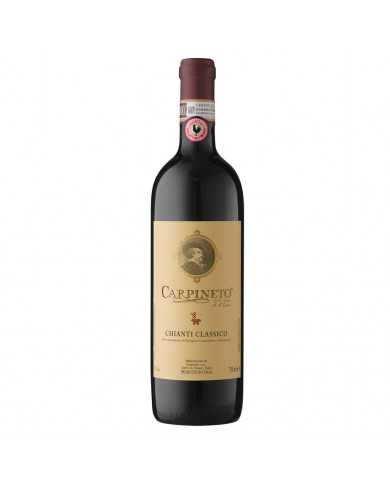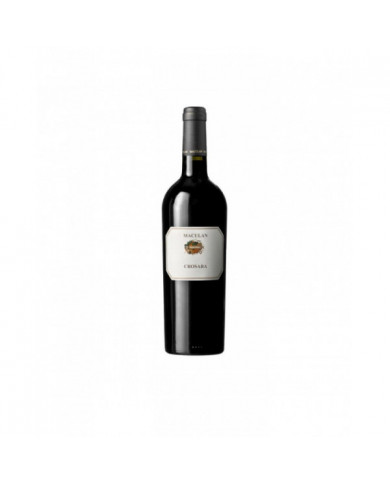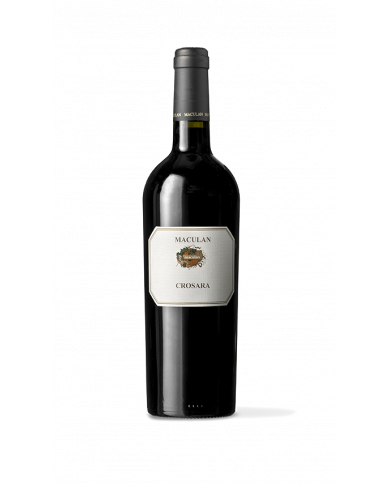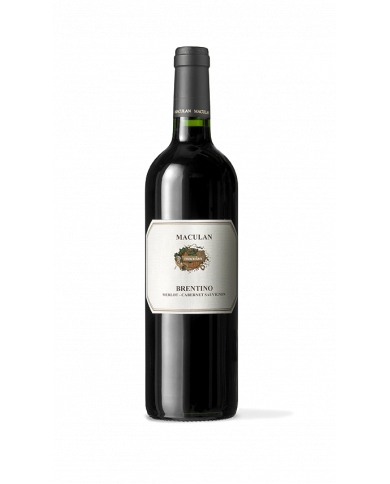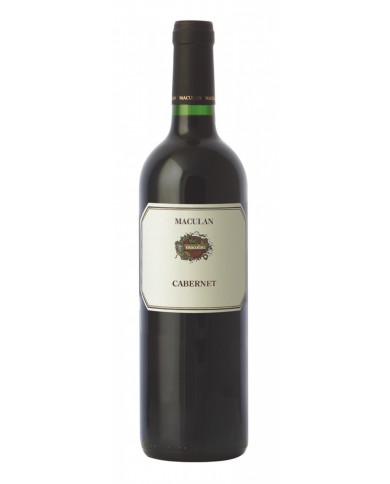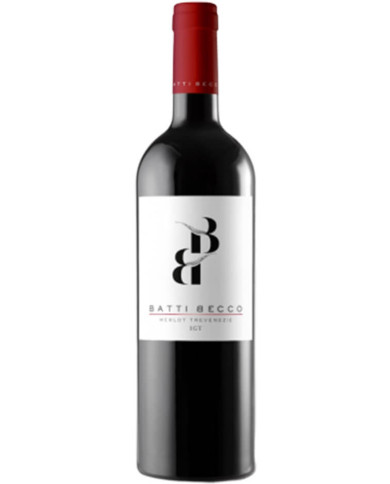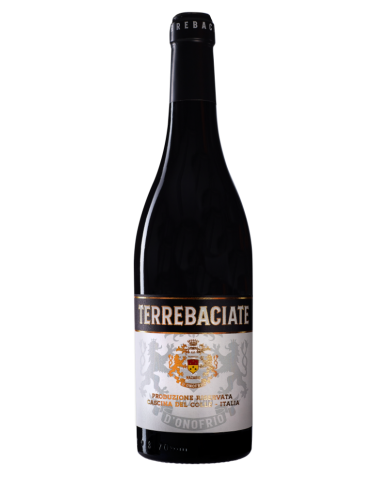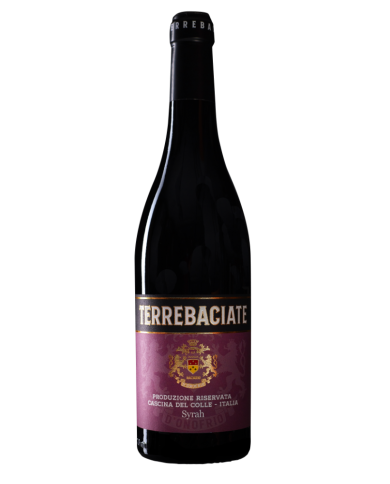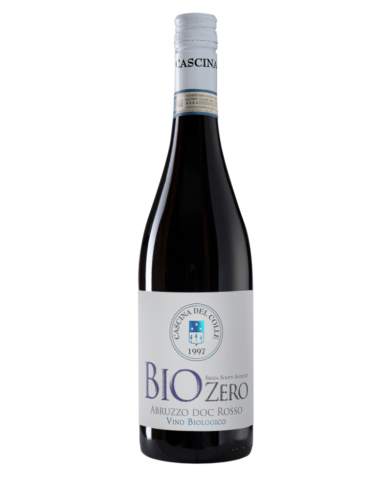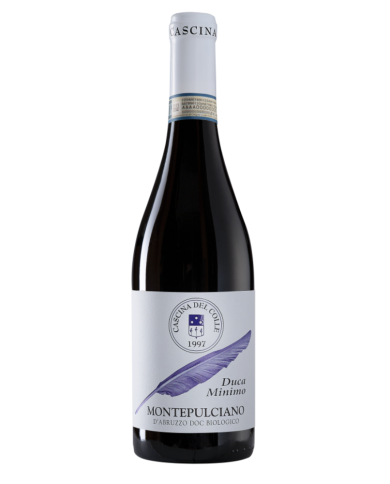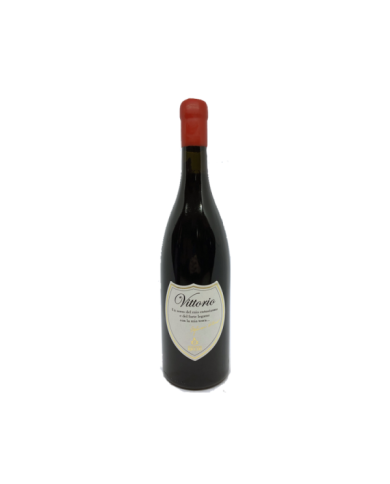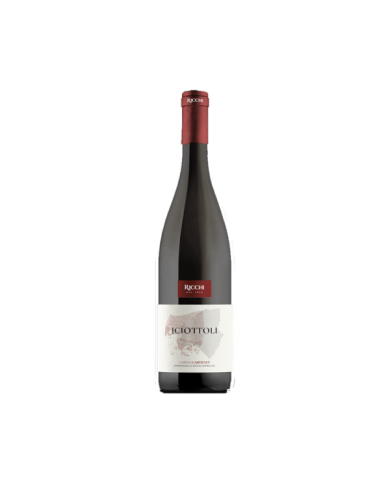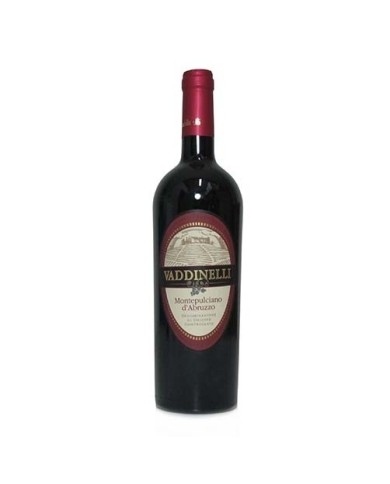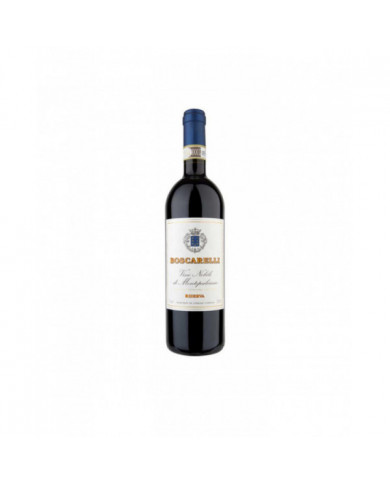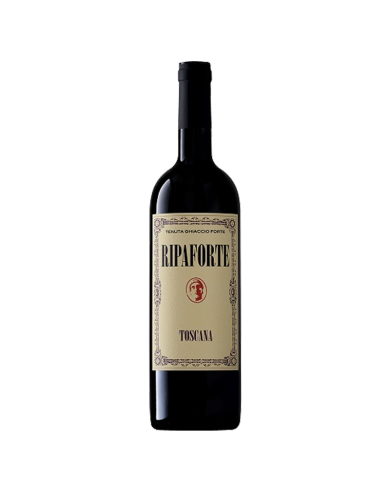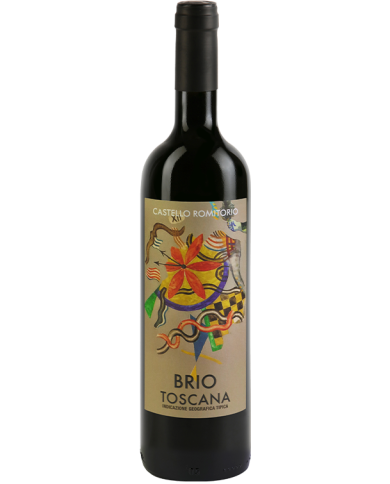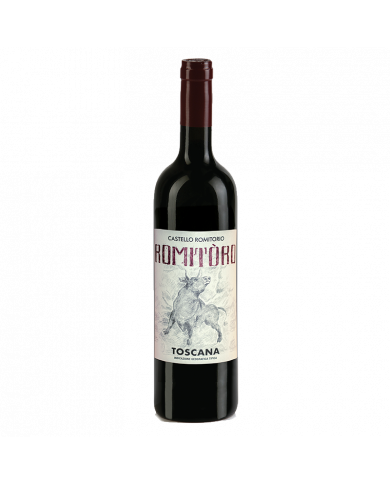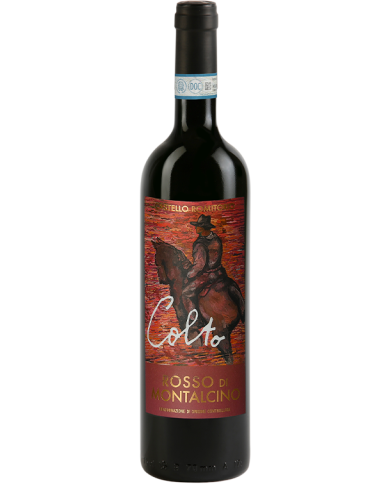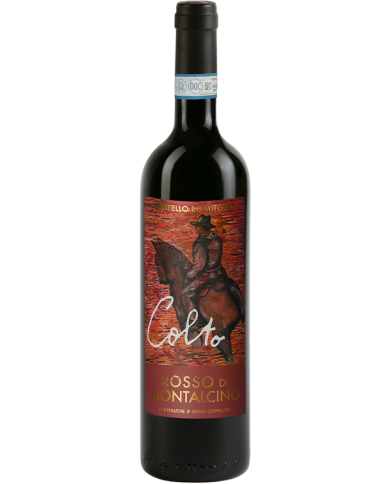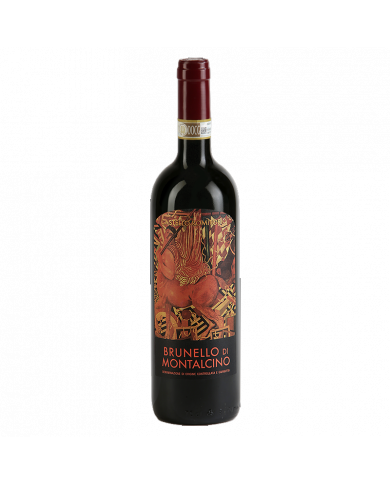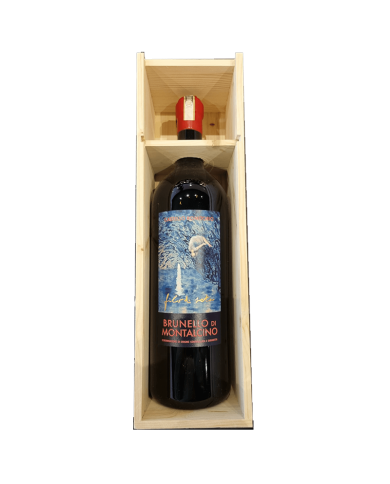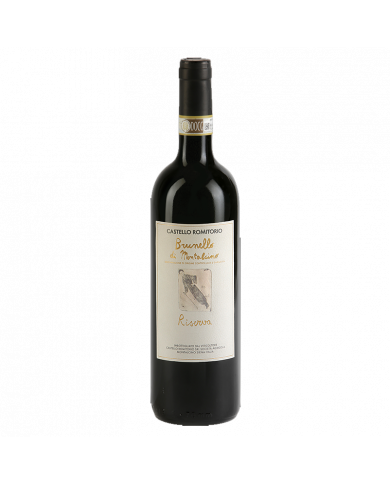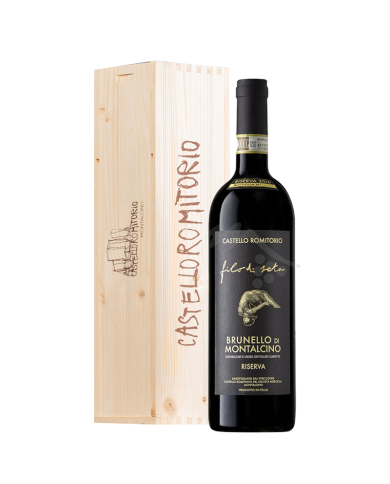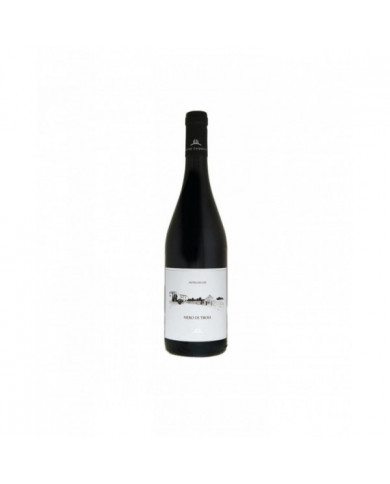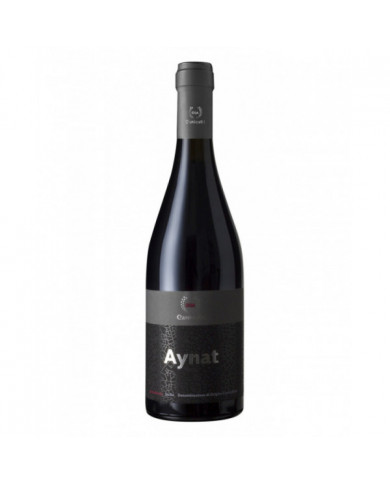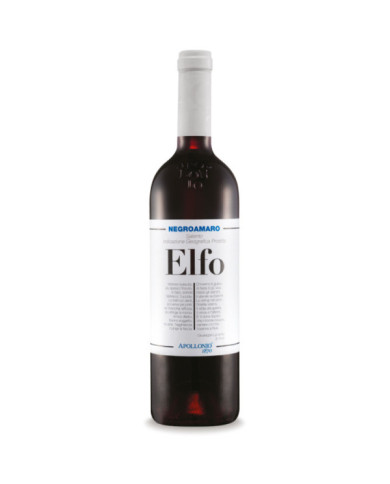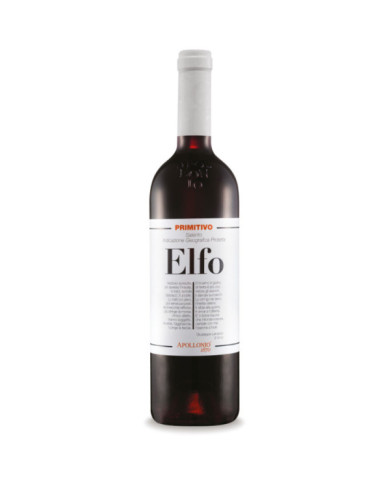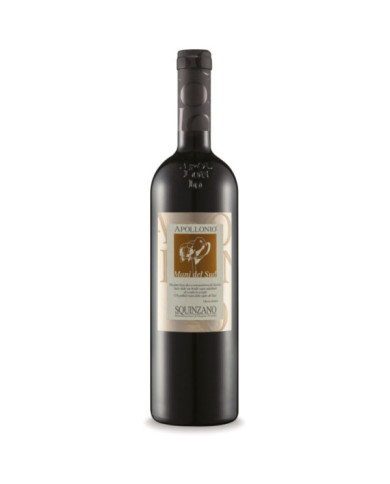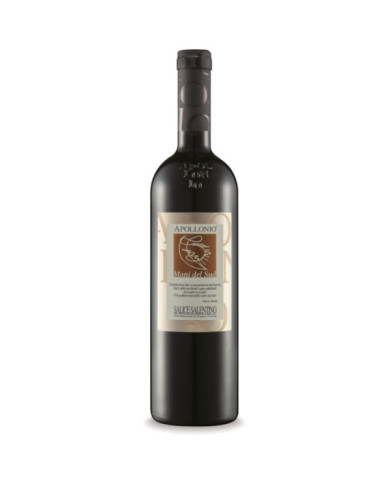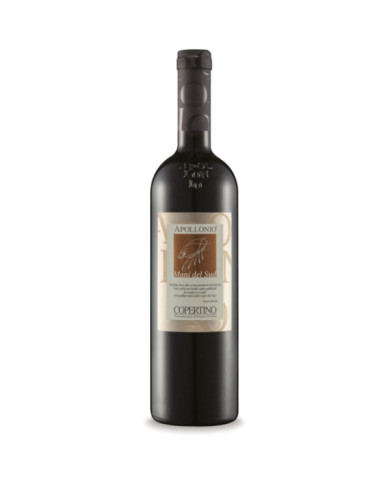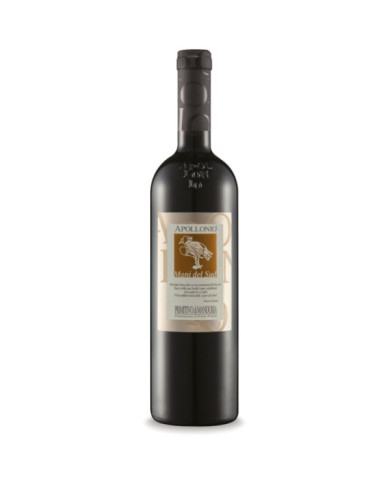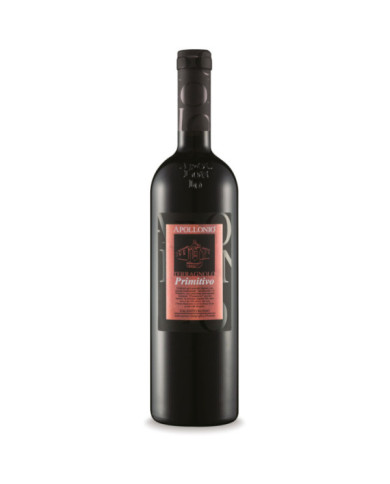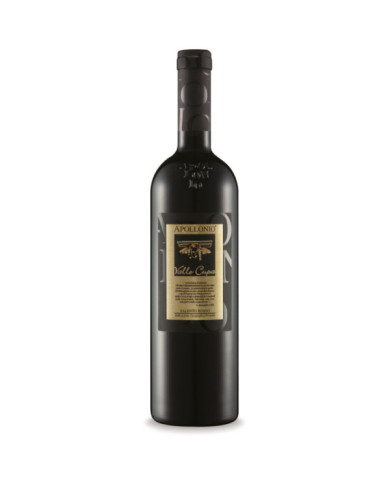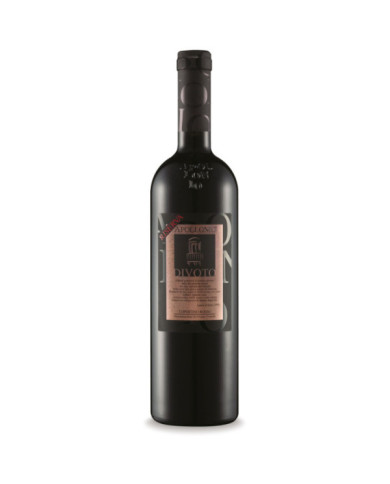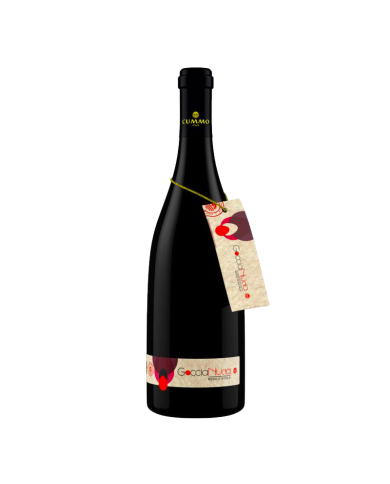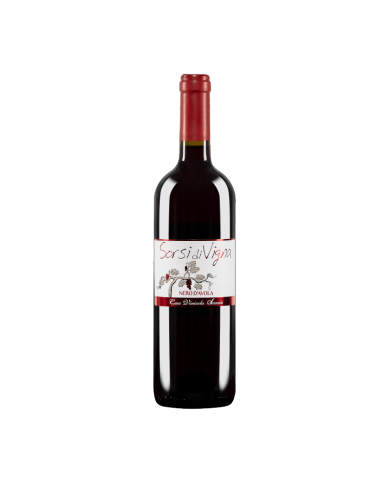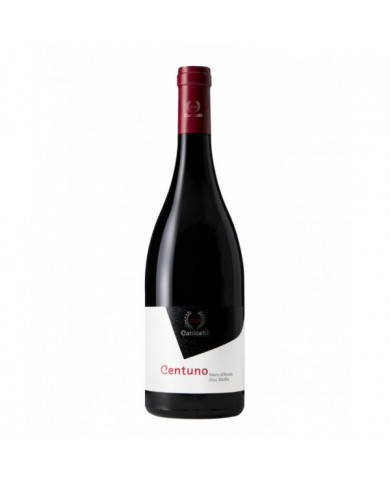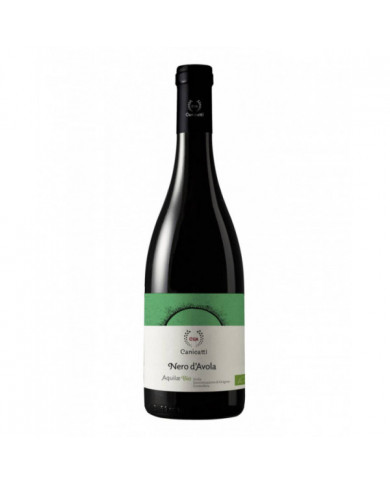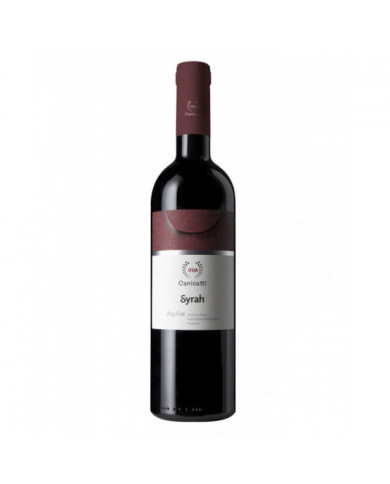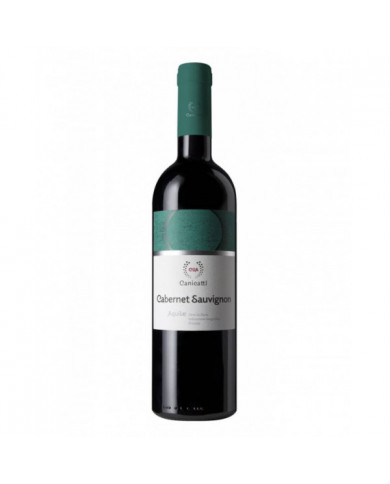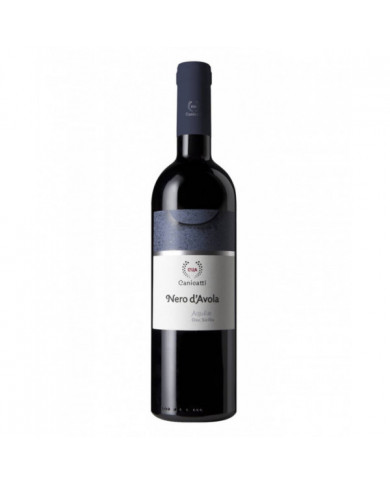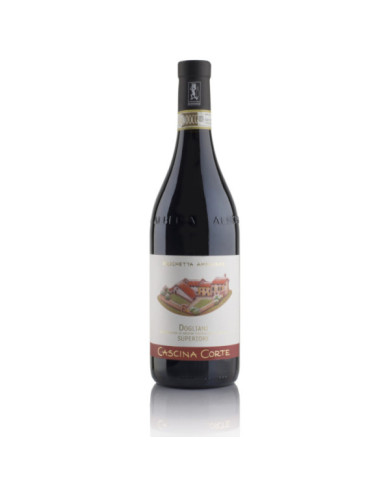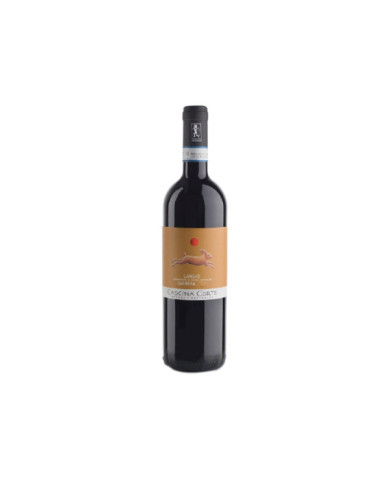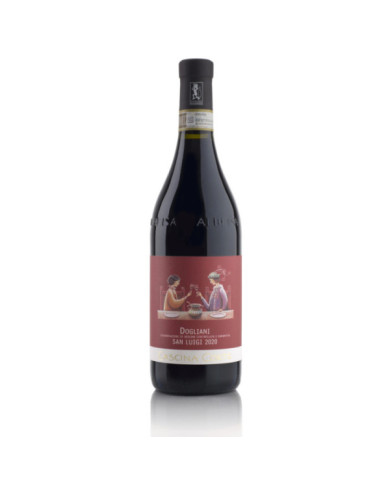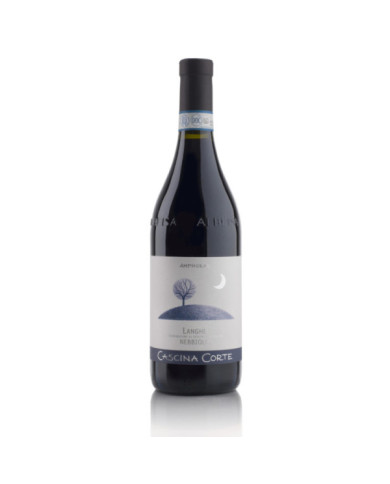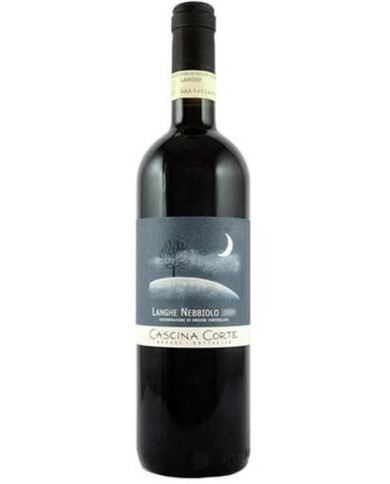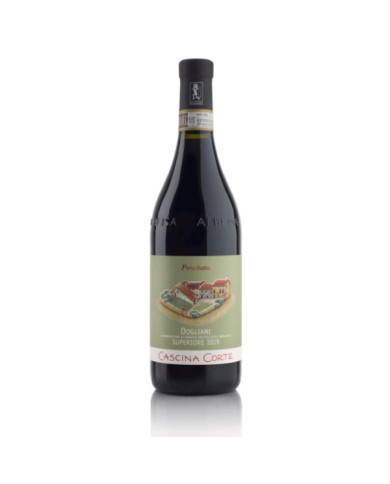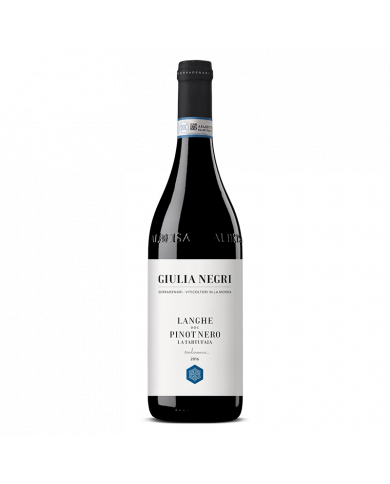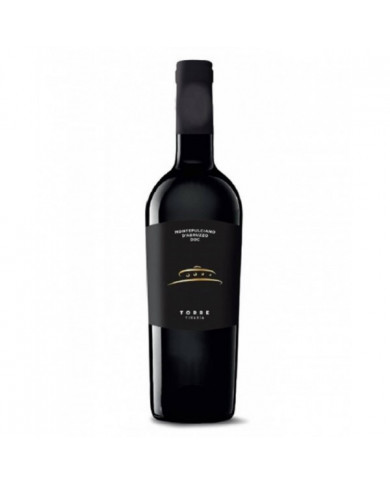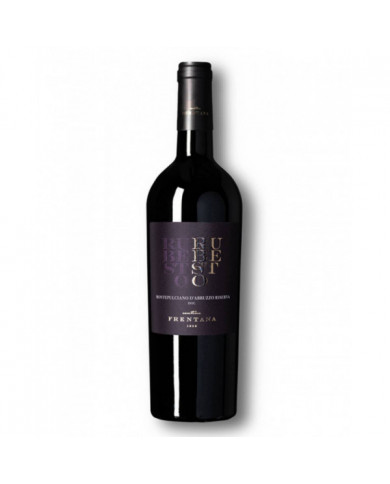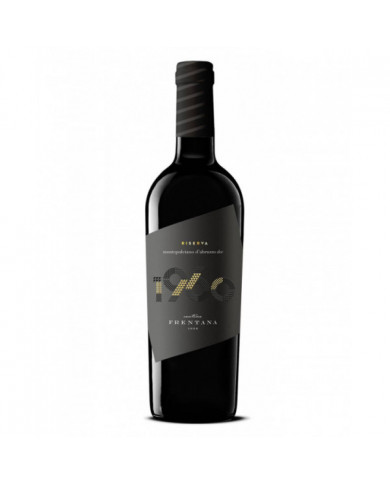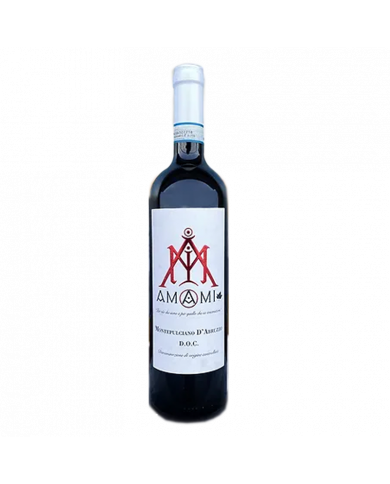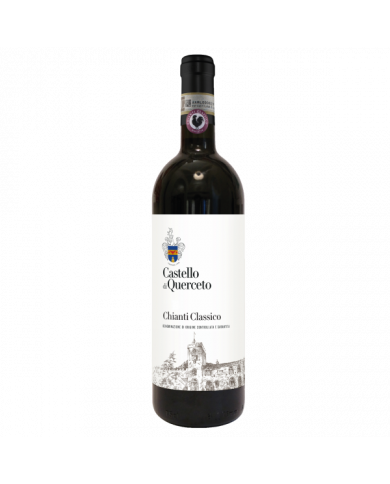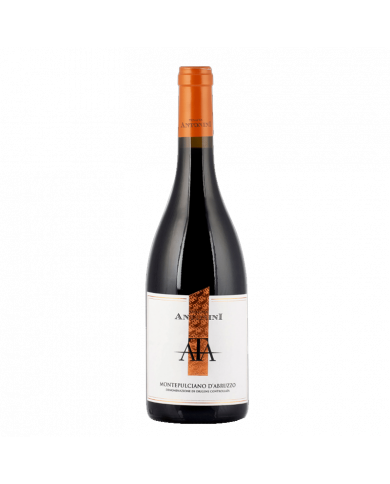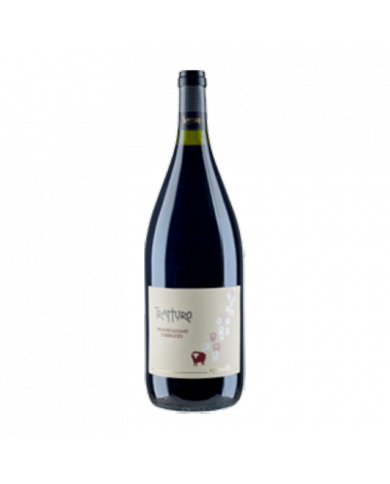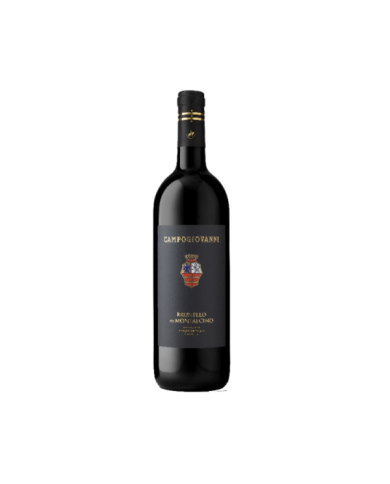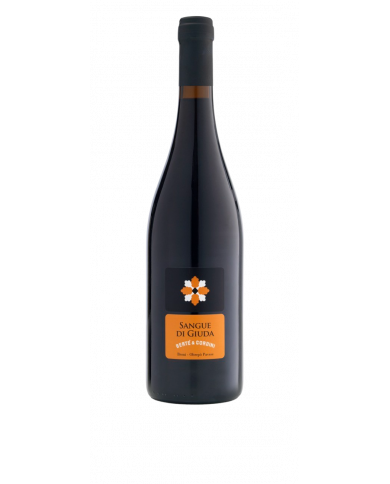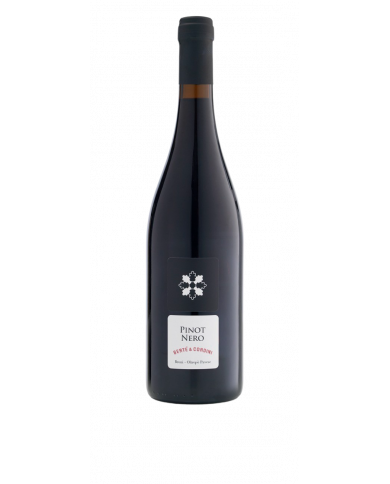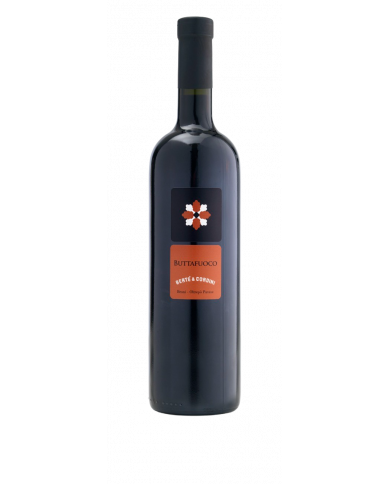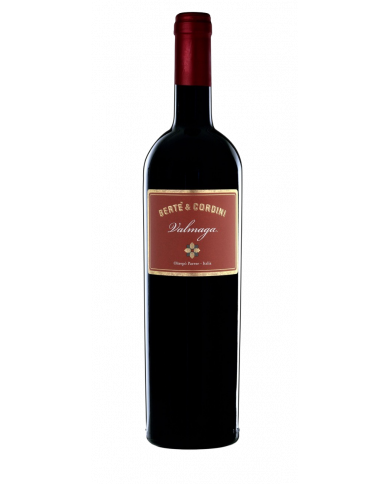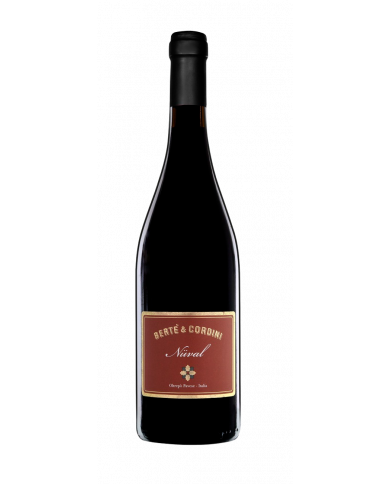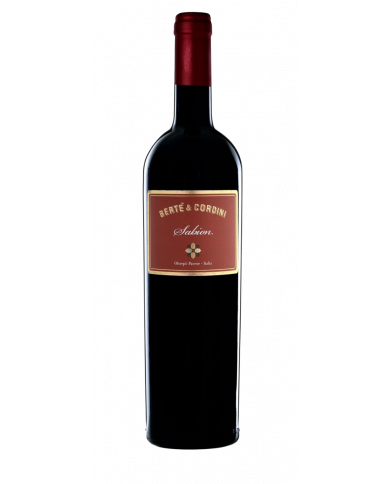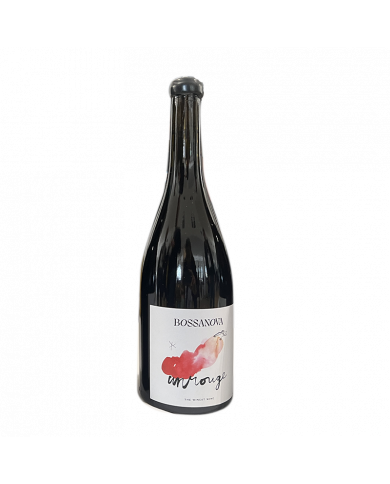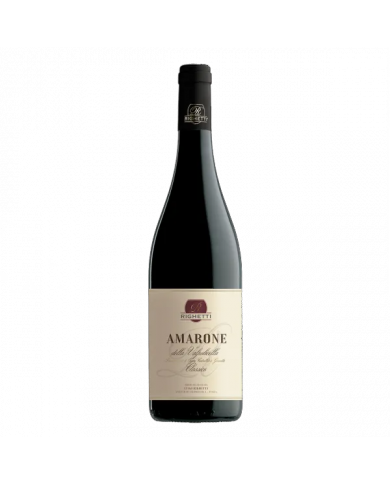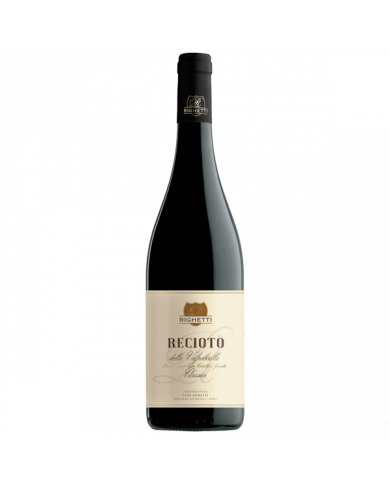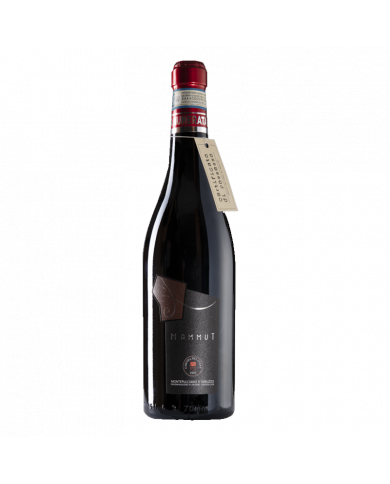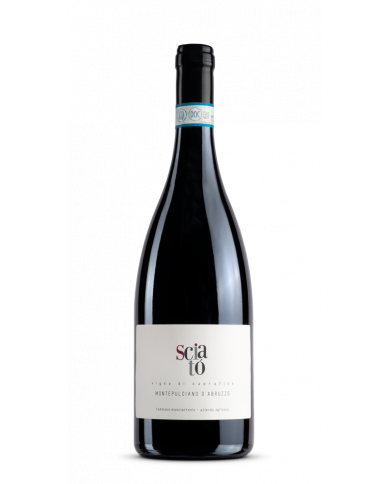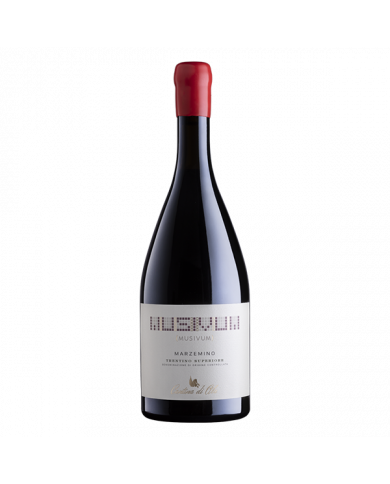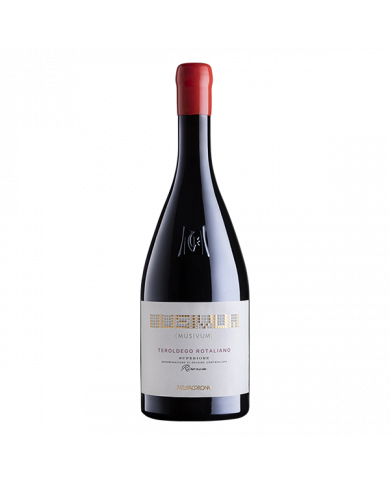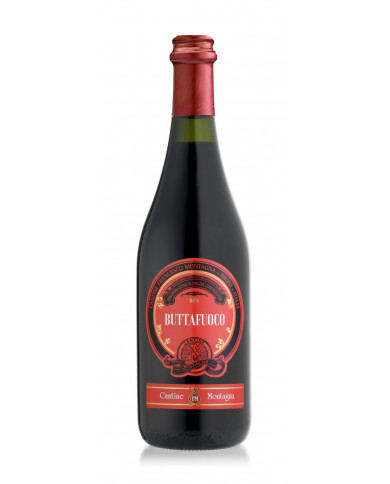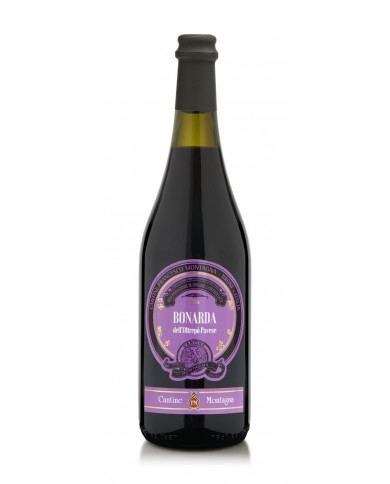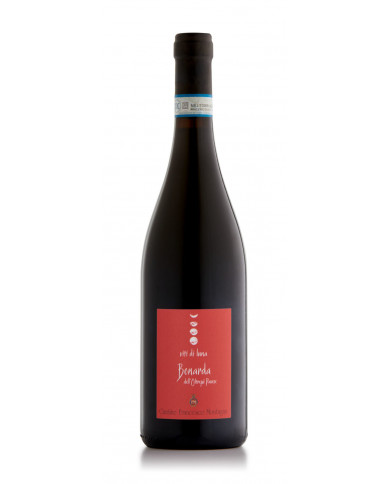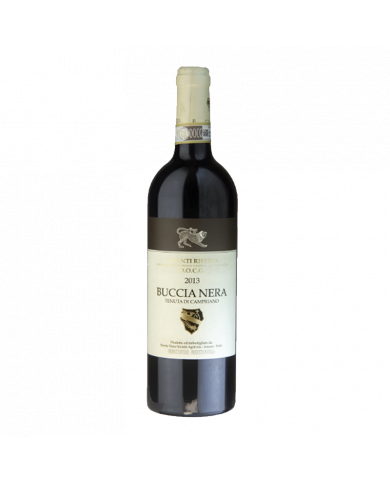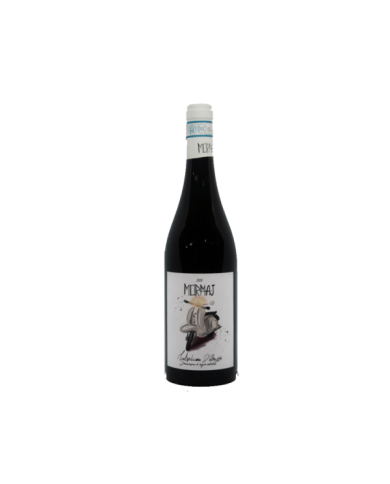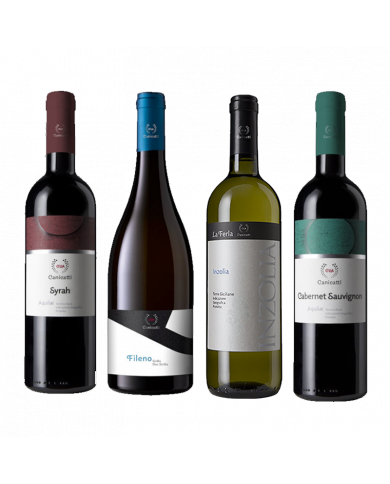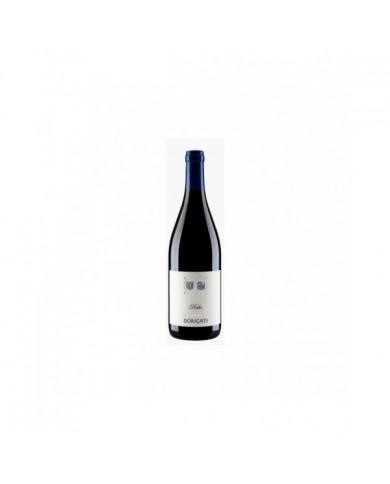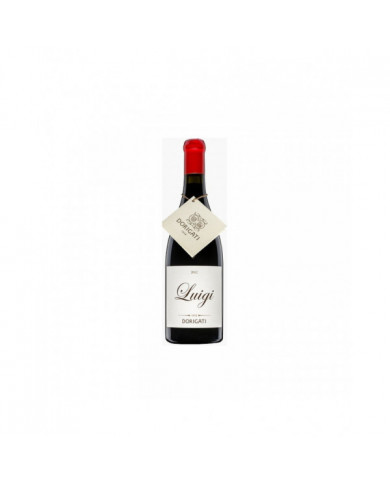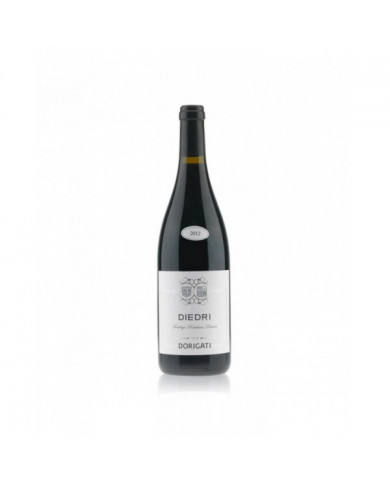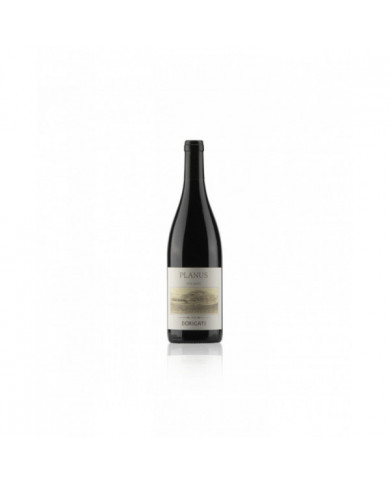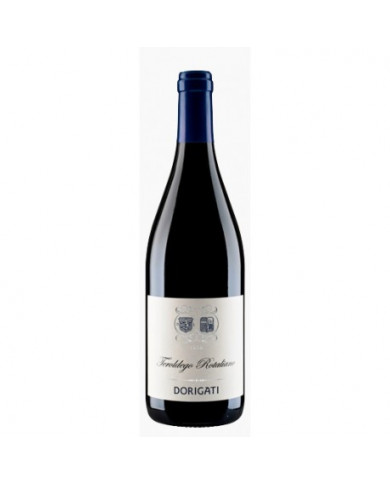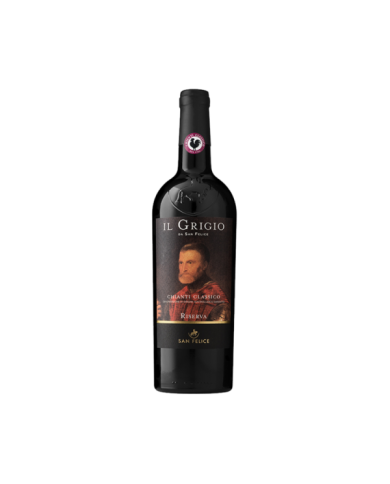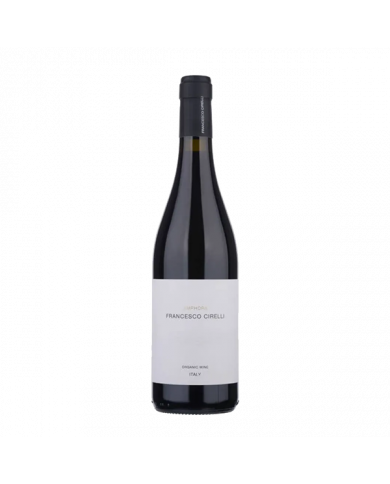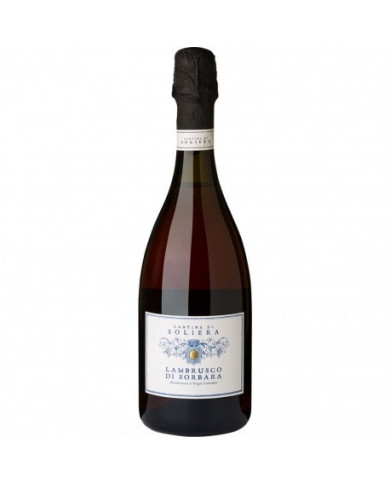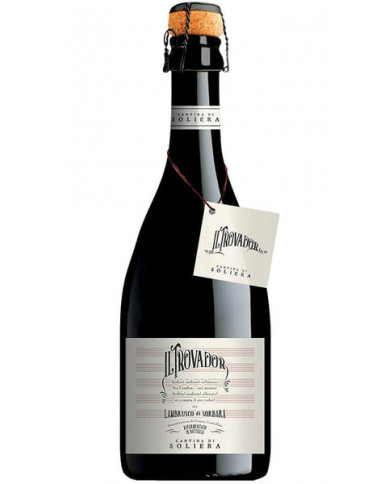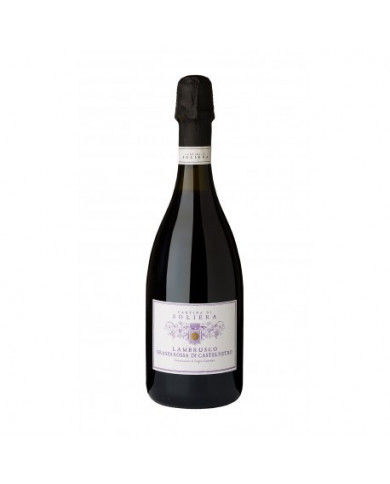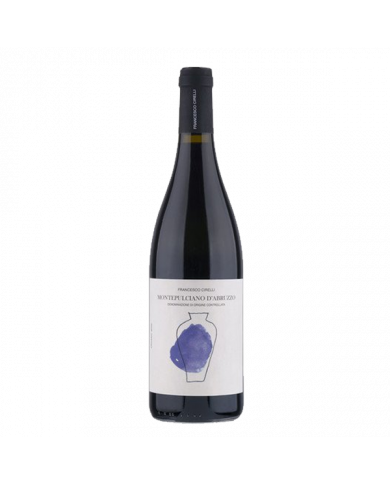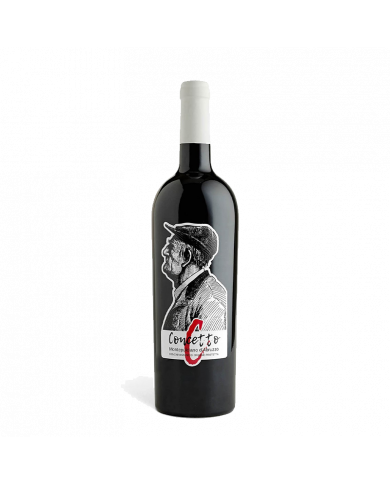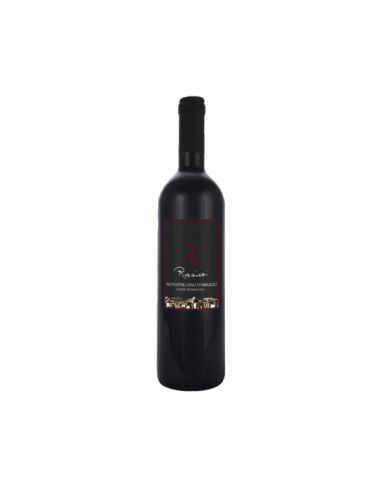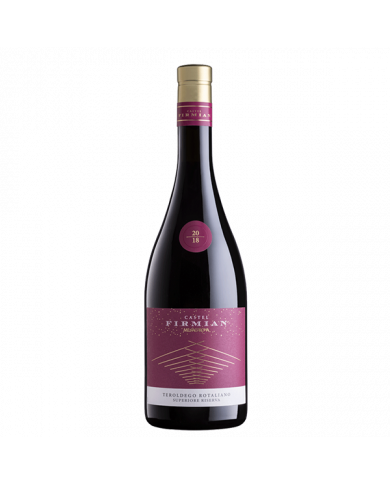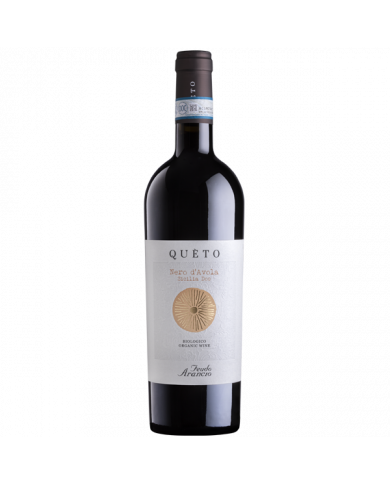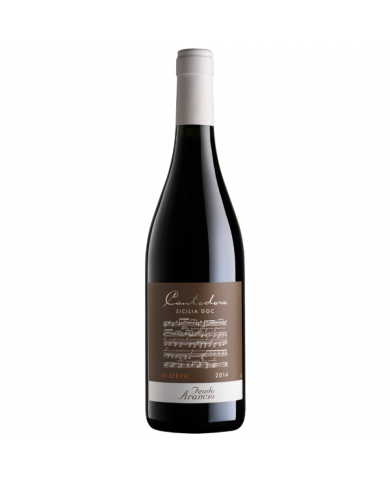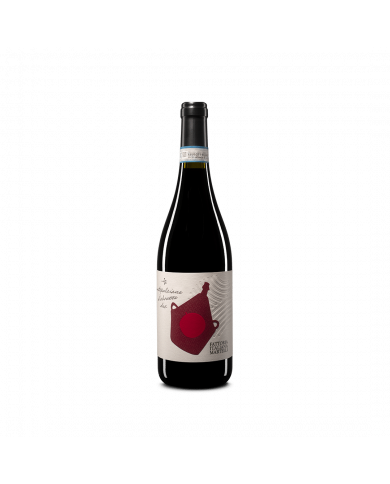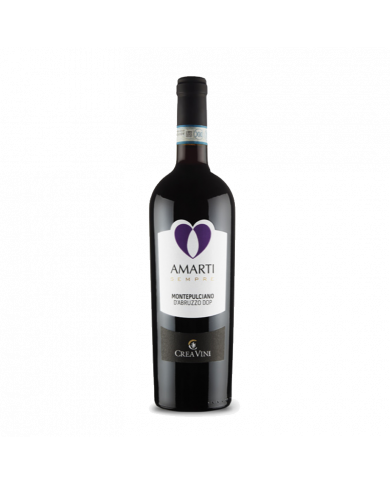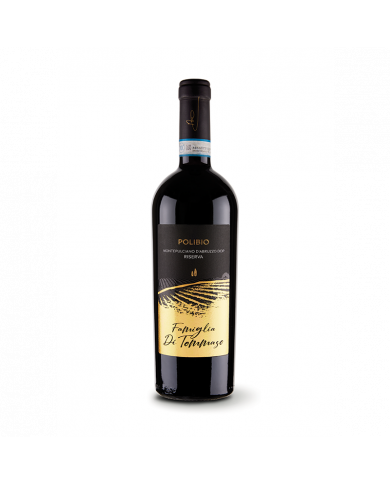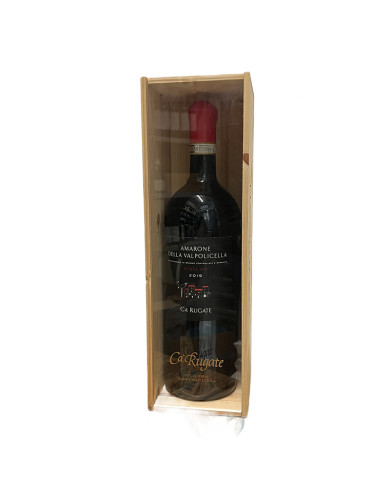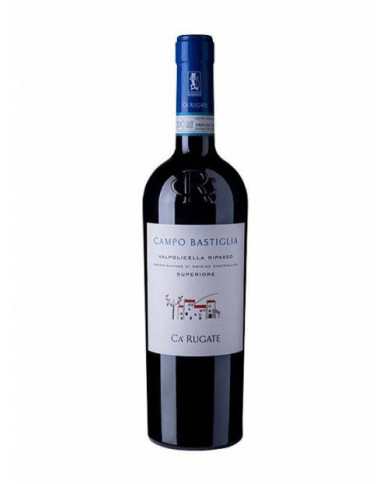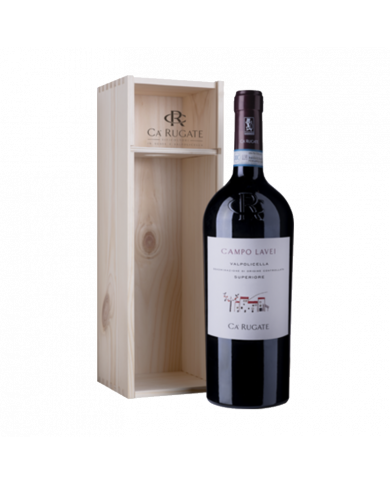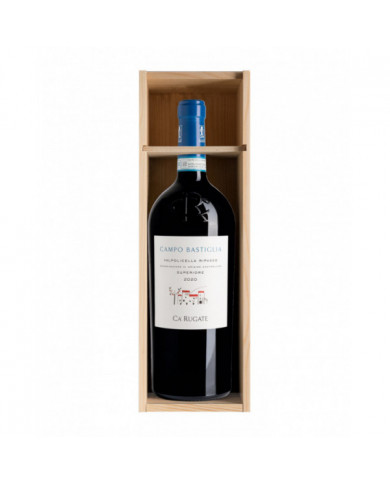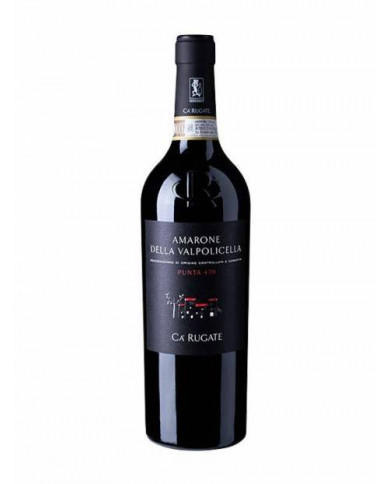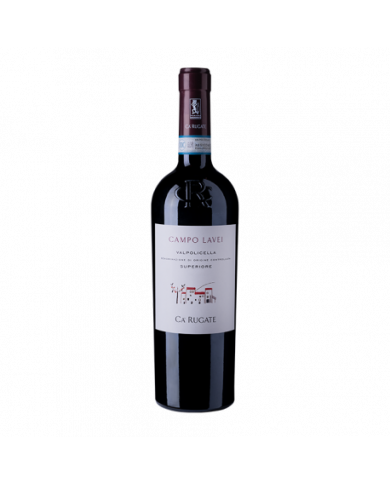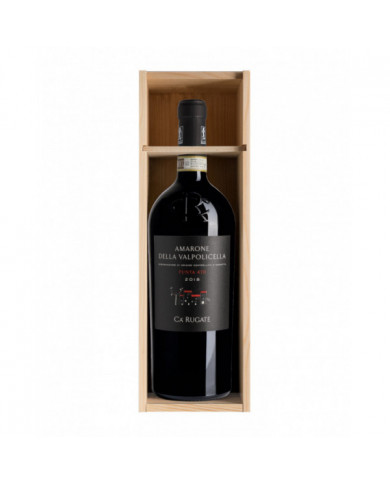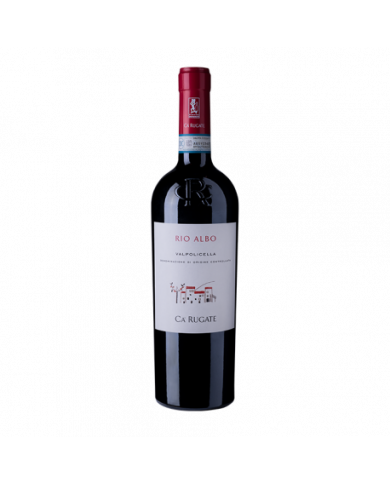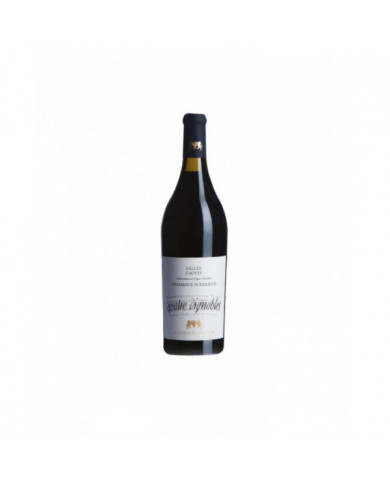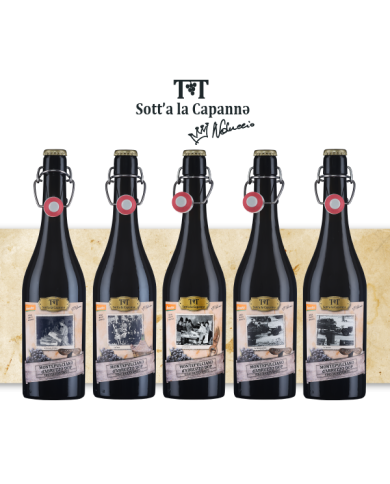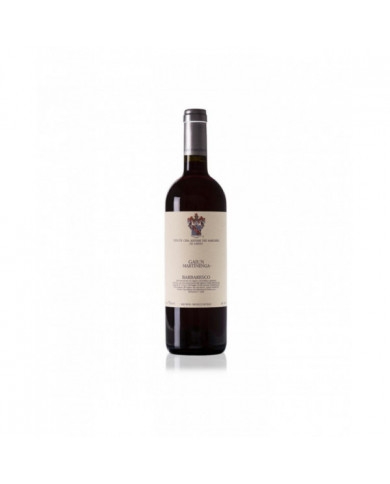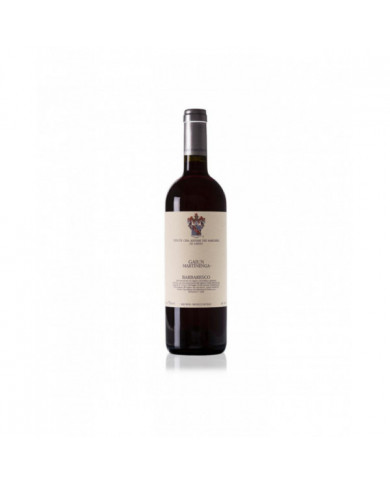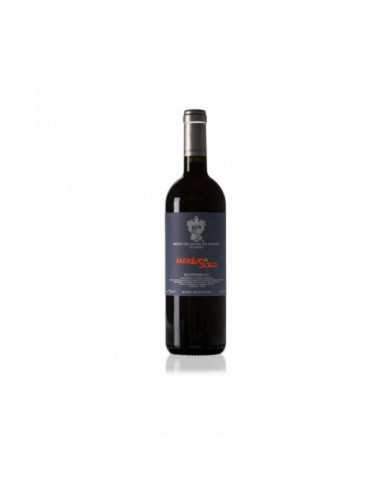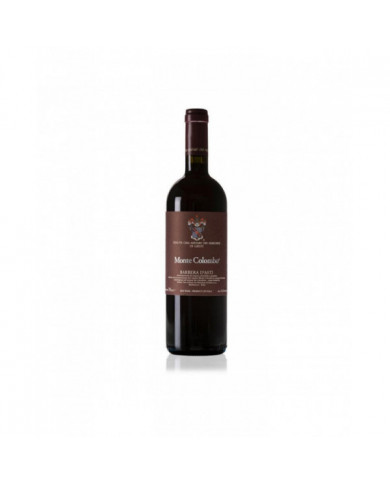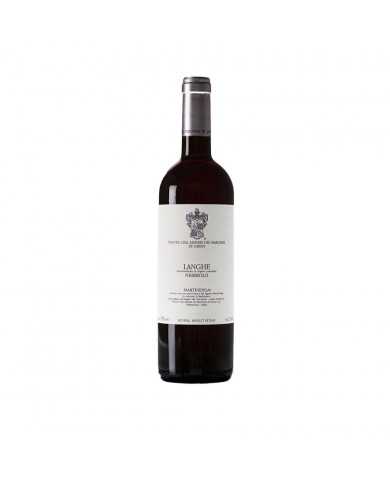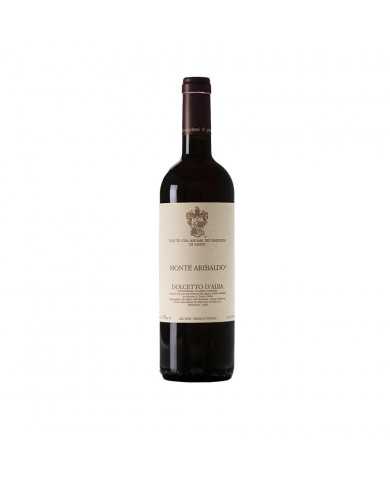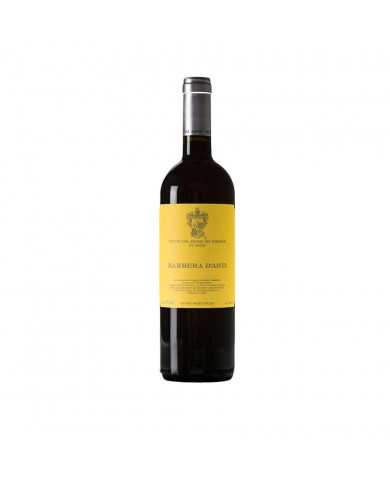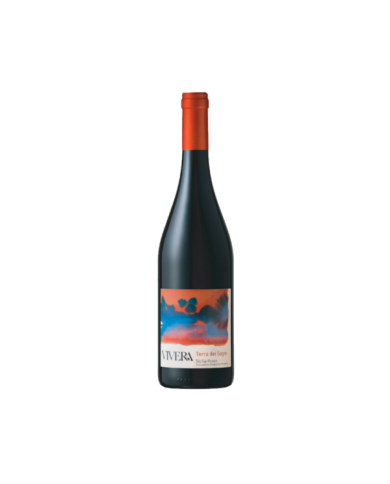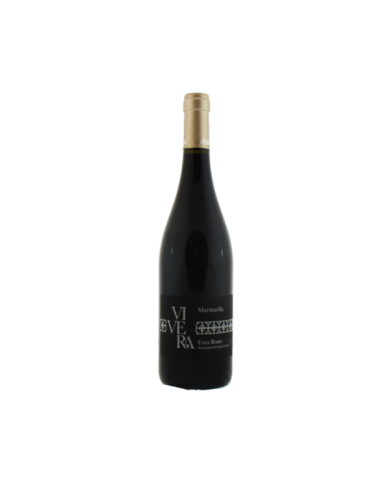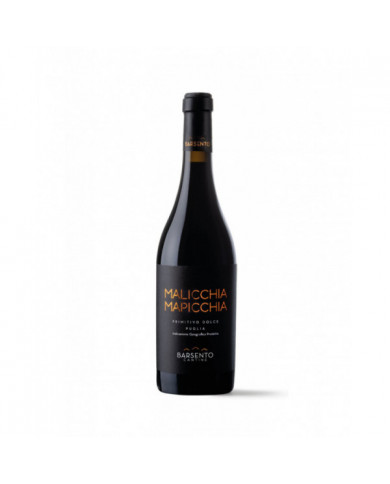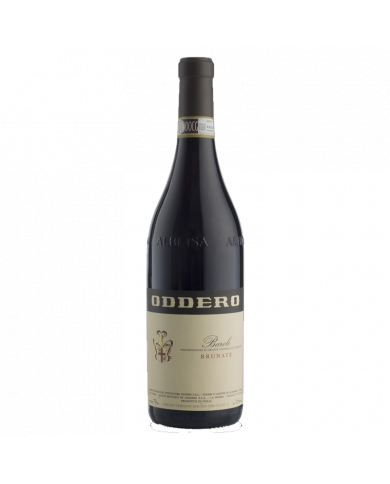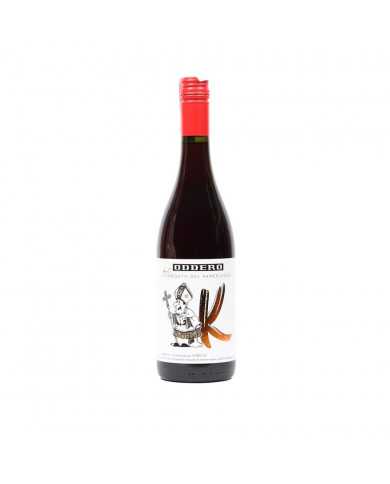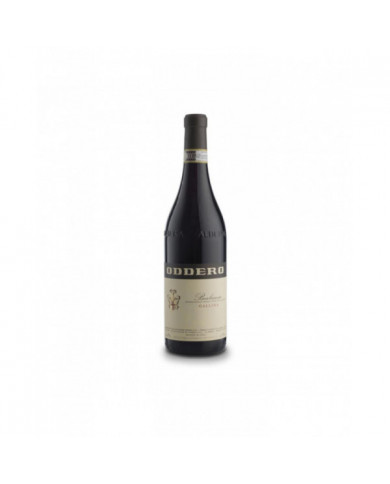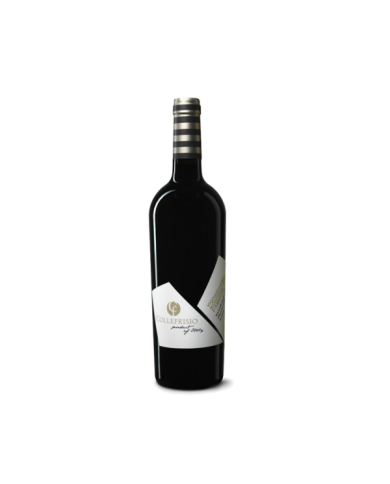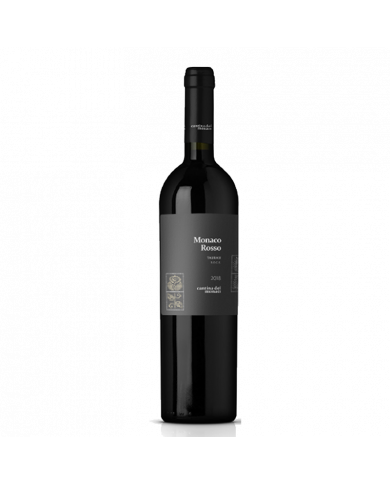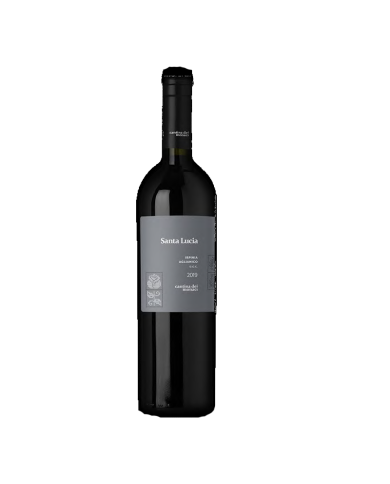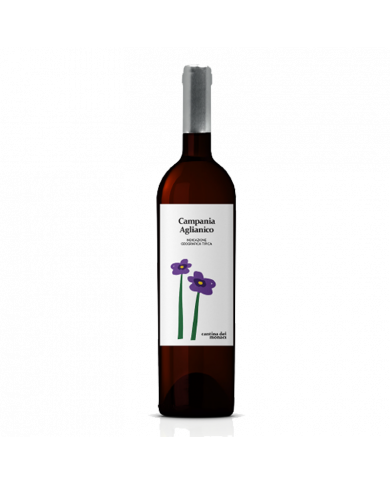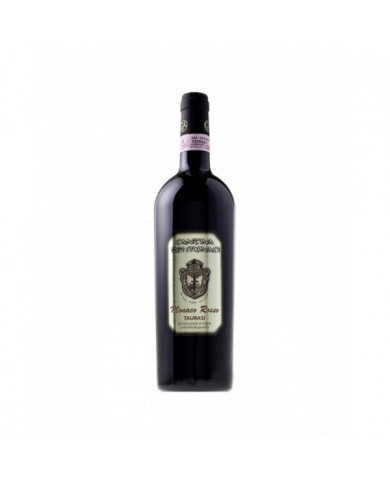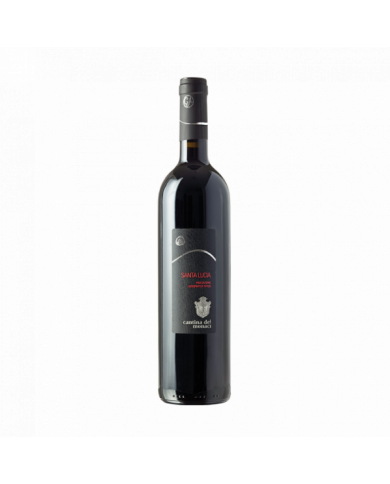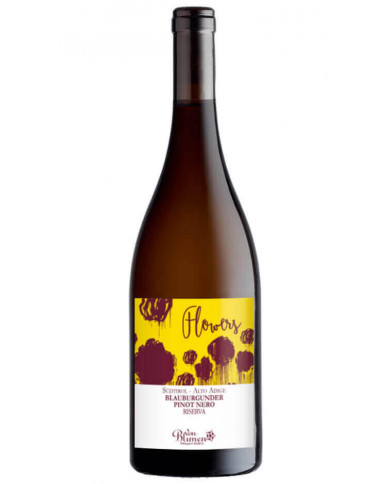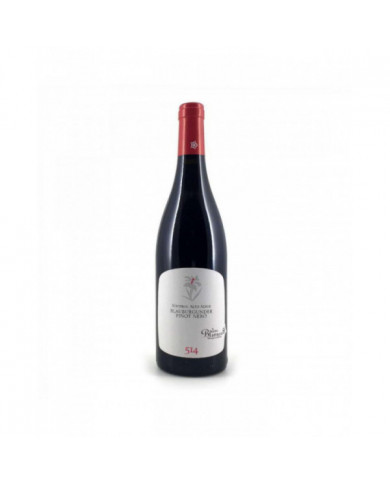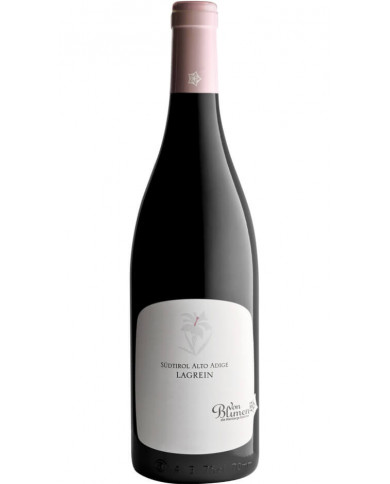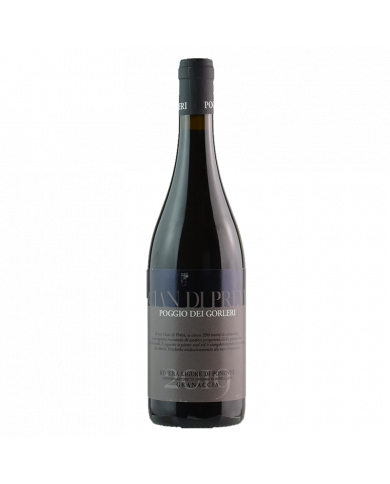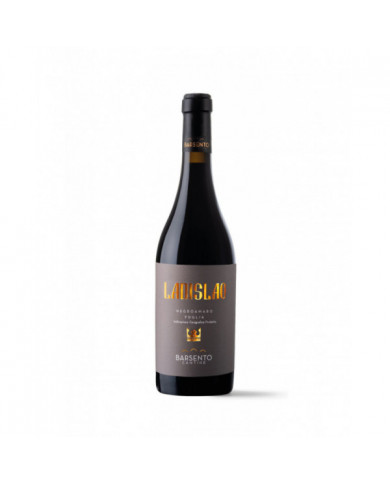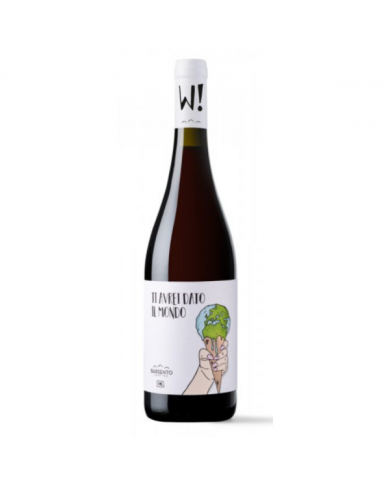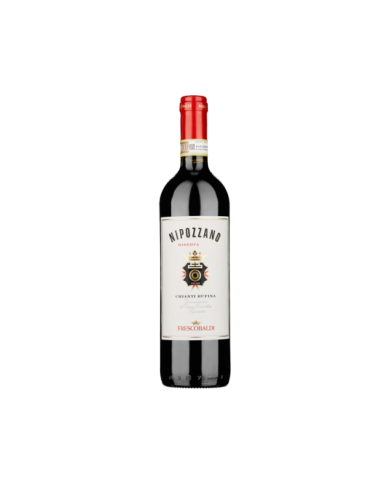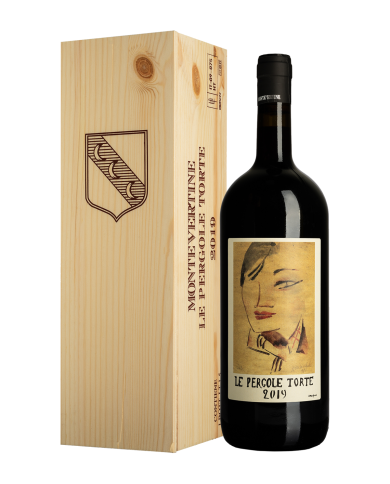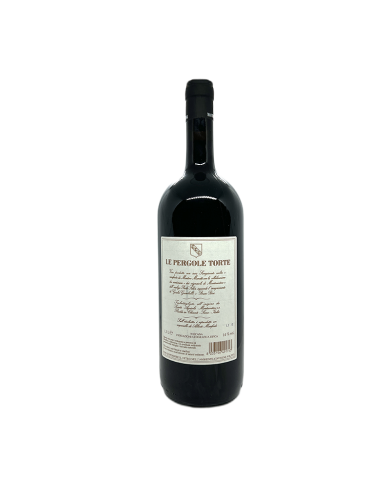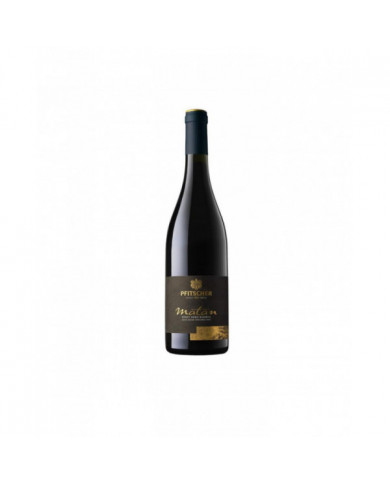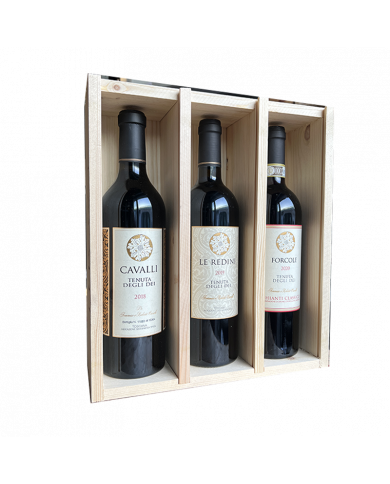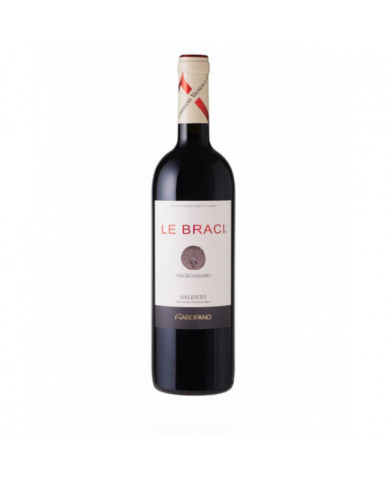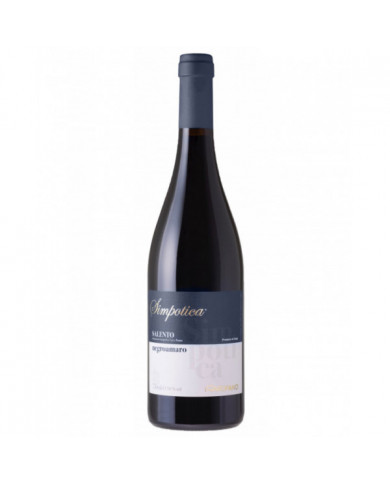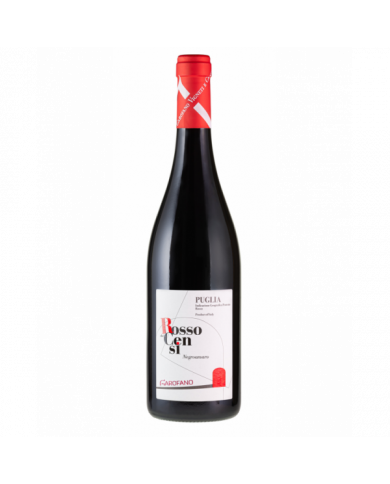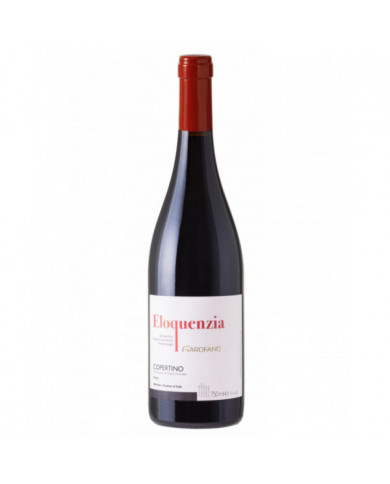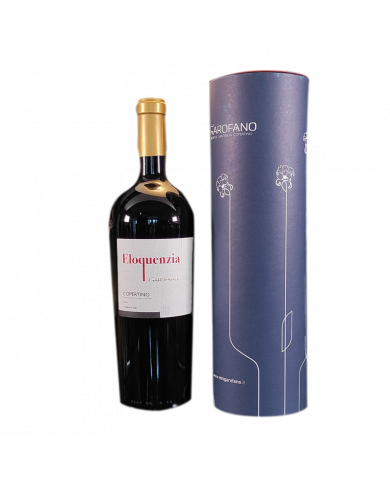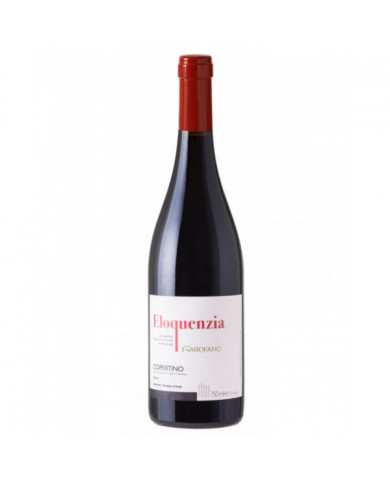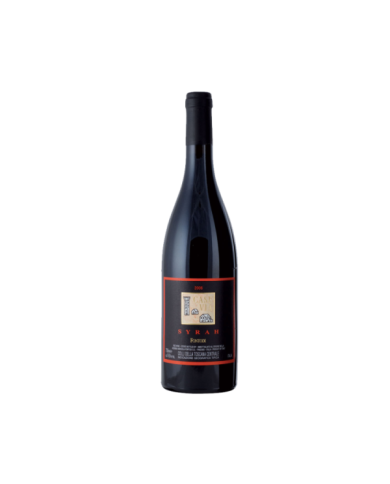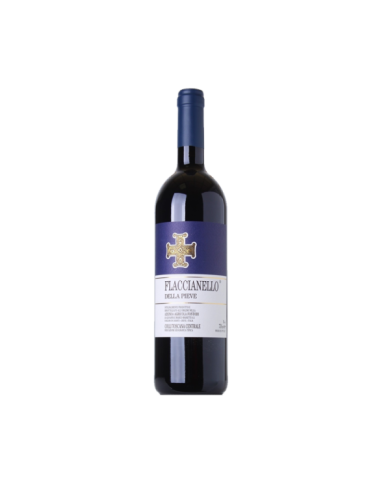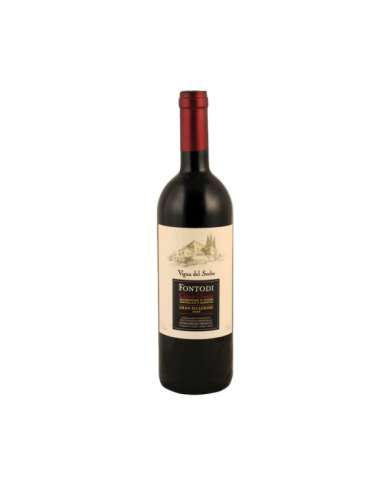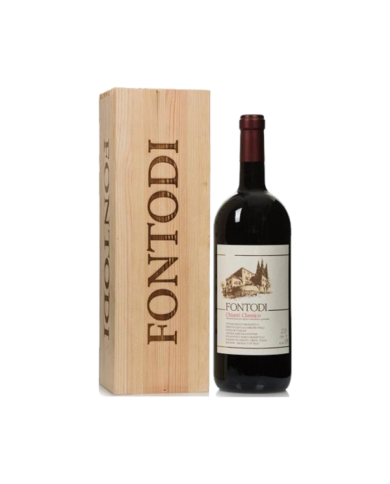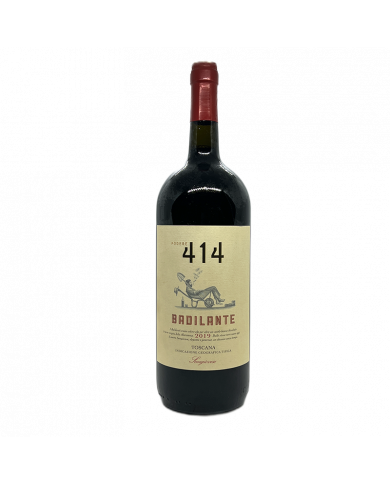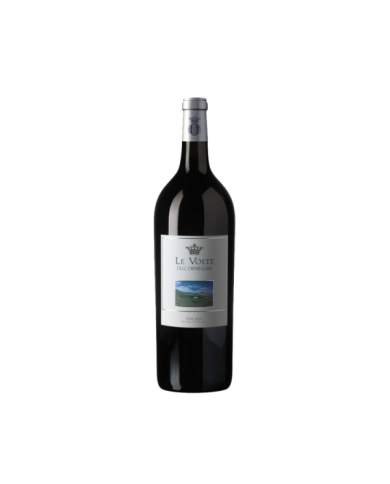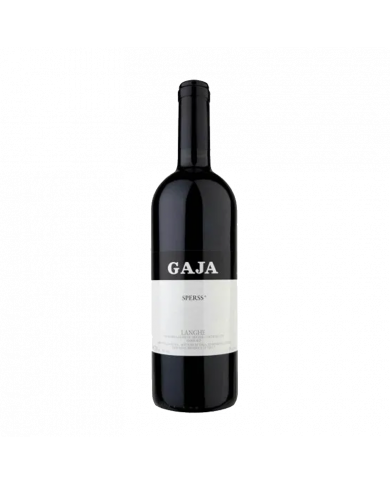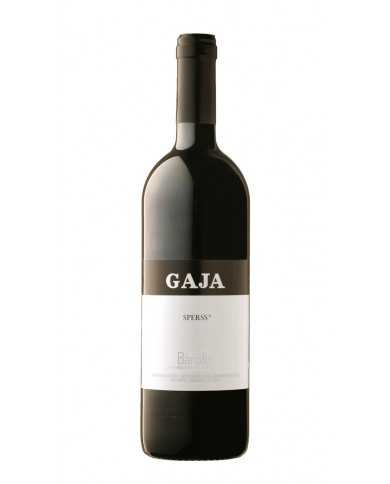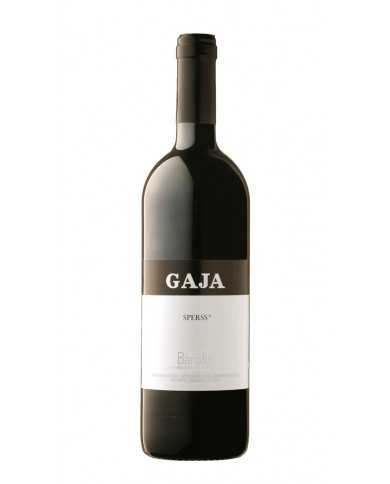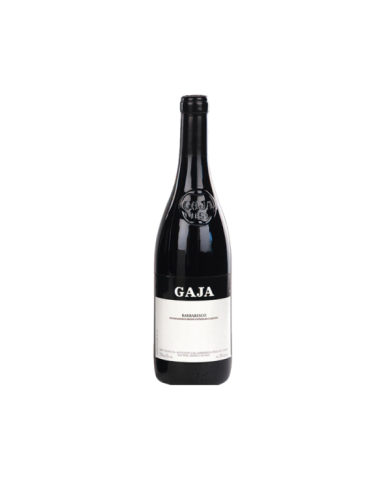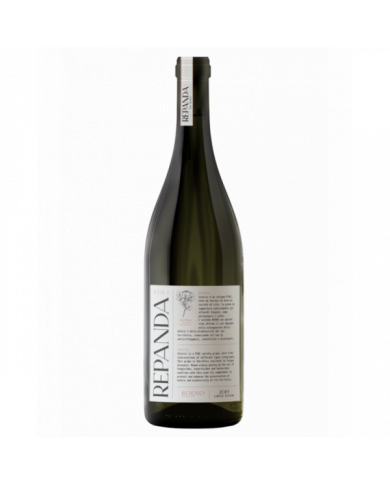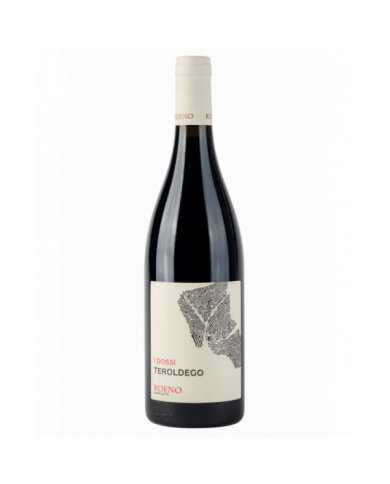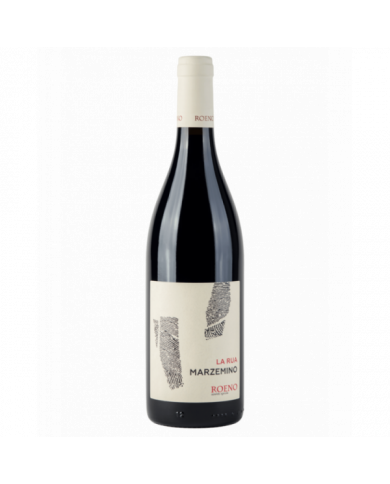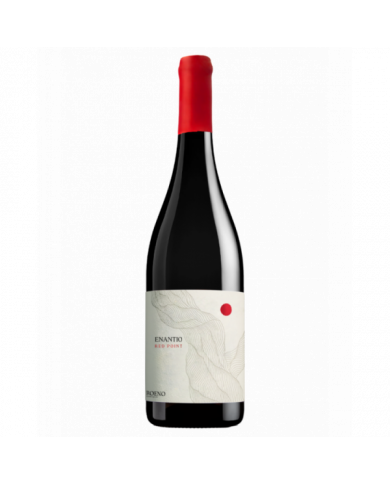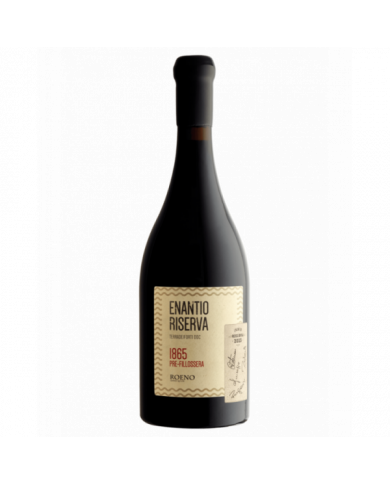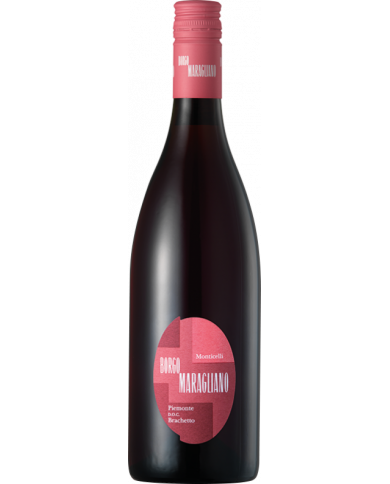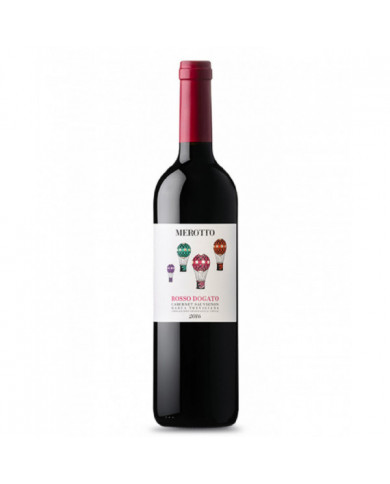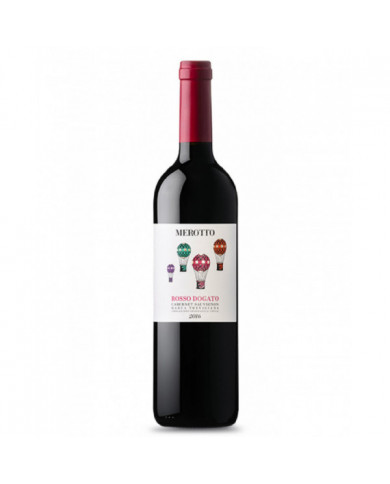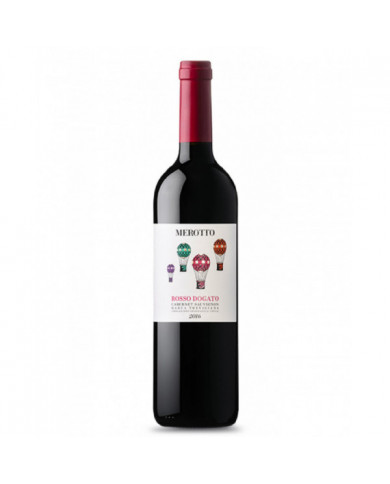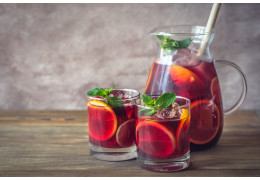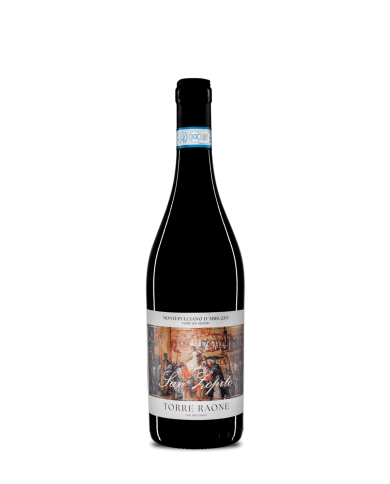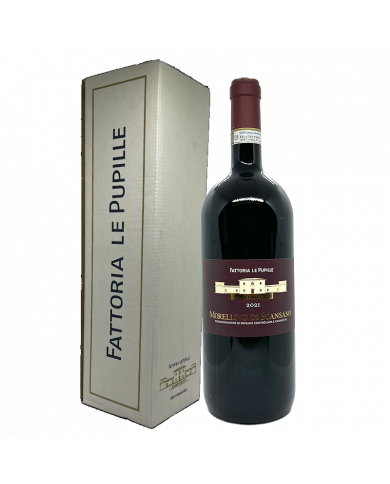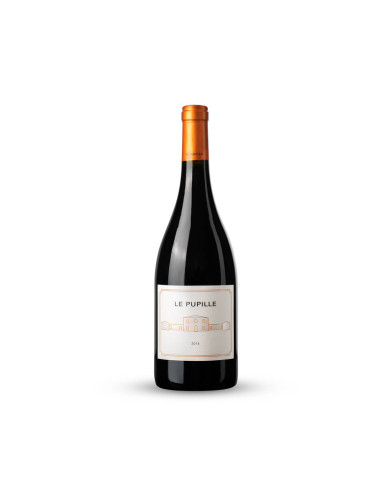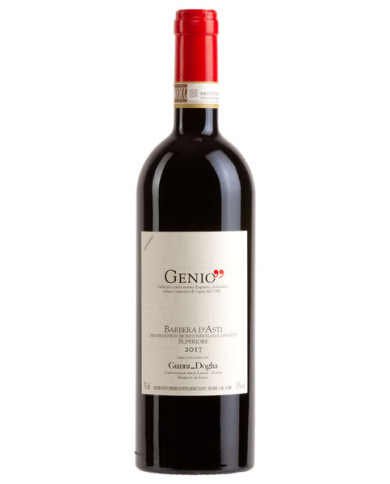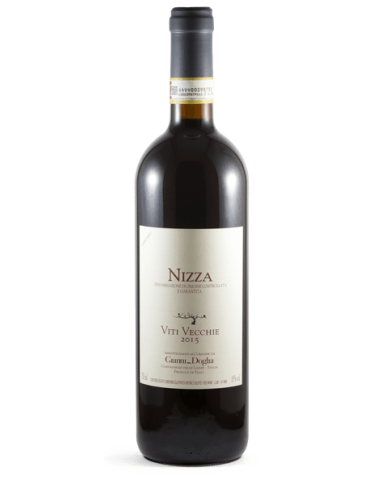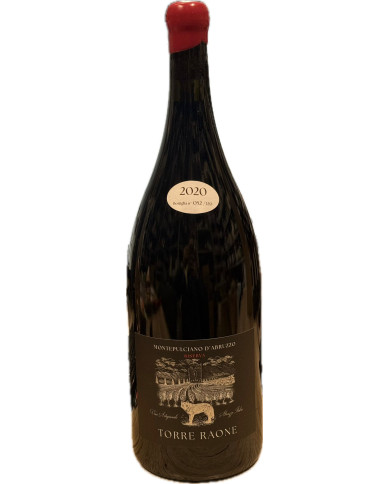Produced in the oldest production area, as stated in the disciplinary that regulates it, this area gave its name to the wine and is the only one where Chianti Classico is produced. It extends between Florence and Siena in a territory of breathtaking beauty, made up of villages perched on the top of the hills, of olive trees cultivated in steep fields with an irregular outline and of cypresses lined up to delimit the innumerable dirt roads.
The Veneto IGT Merlot Crosara red wine from the Maculan winery is one of the Crus of the Maculan company and is obtained exclusively using fine Merlot grapes (an allochthonous vine of French origin). The vineyards are located on the hills around the Venetian municipalities of Ferrata and Santo Stefano and enjoy a perfect combination of mild microclimate and soils rich in mineral salts. The activity of this company for several years has been aimed at the production of quality wines, thanks to a perfect balance between craftsmanship and technological innovation. The production of the Veneto IGT Merlot Crosara wine begins with the harvest, meticulously carried out by hand and selecting only the best bunches. These are sent for fermentation in steel vats at a controlled temperature with maceration on the skins. Maturation takes place in French oak barriques for about 12 months, before refining directly in the bottle. The result is a wine of exceptional quality, full-bodied and robust, with an excellent structure, it has a concentrated and deep purple-red colour. The nose opens with intense aromas of small black fruits and ripe red fruit, enriched by pleasant spicy notes. On the palate it is fruity and structured, with sweet and elegant tannins.
Excellent pairing with game dishes, grilled meats, braised meats and long-aged cheeses.
It goes well with first courses with game sauces, roasts and grilled red meat.
It goes well with first courses with meat-based sauces, roasts and grilled white meat.
The most famous among the native Sicilians. Intense ruby red in colour, the nose has notes of violets, cherries, plums and white pepper. On the palate it is medium-bodied, with soft tannins and delicate red fruits.
The only international variety among Curatolo Arini wines finds one of its maximum expressions in Sicily. Intense ruby red color with violet reflections, the nose offers notes of red fruits, plums, spices, black pepper and vanilla.
Salice Salentino DOP Cantalupi is produced with Negroamaro and Malvasia nera di Lecce grapes from spurred cordon cultivated vines on alluvial soils, medium texture with areas tending towards limestone. The harvest takes place by destemming and soft pressing. Fermentation in stainless steel tanks at controlled temperature. Maceration for 12 days at a temperature of 28-30┬░C. Aging for at least 12 months in hl oak barrels. 30.
Why Duke Minimus To the poet Gabriele D'Annunzio, born in Abruzzo, who liked to refer to the "Duke Minimo"
Why Duke Minimus To the poet Gabriele D'Annunzio, born in Abruzzo, who liked to refer to the "Duke Minimo"
From the archaeological discovery of a mammoth tusk in the second half of the 60s at the point where the current company "La Cascina del Colle " was built. Hence the idea of a lively, powerful and majestic wine
Invasione Riserva Villamagna Cascina del Colle , ruby red. On the nose hints of red fruit and aromas of jam. Round and balanced on the palate, pleasantly tannic.
Bold and decisive wine but its aromatic soul blends in a fascinating symbiosis with soft and full aromas.
Ruby red in the glass, with garnet hints. On the nose it is rich in references to overripe red fruit, which is followed by spicy hints and ethereal nuances. The taste is balanced and full-bodied, characterized by a good persistence and a fruity finish again.
To combine with the second courses of the land cuisine, it is excellent with roast rabbit.
This Riserva was revived from the 2010 vintage almost 20 years after its last edition in 1992. We took that break because over the past 26 years we have progressively reselected and replanted our historic vineyards; we had concentrated on clonal selections, on the different expressiveness of Sangiovese in relation to soil and climatic variations and on the possibility of combining the characteristics of Sangiovese with other international vines. In 2010, however, we found an increased complexity and structure in the grapes from the first replantings of native vines, which convinced us to re-propose the Riserva di Vino Nobile only from native grapes, just like in the 70s and 80s.
Typically ruby, it initially presents itself to the nose with hints of dark chocolate and with nuances of black cherry jam, enriched with spicy and flint hints. In the mouth it has a noble, structured and refined profile, with good persistence.
The Brio IGT Toscana Rosso is a wine based on Sangiovese grapes from the younger vines of the company. It is a fresh and fruity wine, which expresses the Tuscan territory very well. Brio is a balanced and elegant wine, it vibrates with energy and persists on the palate demonstrating how even a young Sangiovese can express an authentic and complex character.
Romitoro is the symbol of Castello Romitorio's vision and continuous aspiration to excellence. Romitoro is a modern and energetic Super Tuscan that combines the opulence of the Mediterranean with the perfect dose of elegance and persistence. This wine is for anyone looking for a Super Tuscan with personality and excellent drinkability.
Since the 2020 vintage, Castello Romitorio has been producing a new Rosso di Montalcino called Colto. A Rosso di Montalcino with a vibrant, long and expressive colour, the result of young and strong vines planted in the uncontaminated territory of the Castello Romitorio north-west of Montalcino. The wine is produced in very small quantities (only 6000 bottles).
Since the 2020 vintage, Castello Romitorio has been producing a new Rosso di Montalcino called Colto. A Rosso di Montalcino with a vibrant, long and expressive colour, the result of young and strong vines planted in the uncontaminated territory of the Castello Romitorio north-west of Montalcino. The wine is produced in very small quantities (only 6000 bottles).
Brunello di Montalcino Castello Romitorio is our pride: the fruit of more than thirty years of work in harmony with nature in the Montalcino terroir. The Romitorio company is located in the northwest quadrant of Montalcino where this classic Brunello is produced from Sangiovese grapes, coming from old and young vines, carefully harvested and selected by hand on the counter, before and after destemming. Fermentation takes place in stainless steel tanks, with a short initial period of cold maceration (below 20┬░C) on the skins for approximately 15-20 hours, followed by a higher controlled temperature maceration which can last up to 20 days. Malolactic fermentation begins naturally and lasts for about 10 days before the wine is left to rest to separate it from the sediment.
Filo di Seta expresses the strong, though always very elegant, character of the wild and dark soul of the microclimate that characterizes the north-western area of the Municipality of Montalcino. The historic Sangiovese vineyards are located at an altitude of about 350 meters above sea level, they are looked after with dedication and passion so that each plant can give birth to harmonious and balanced products, which allow the bunches to reach optimal ripeness.
Filo di Seta expresses the strong, though always very elegant, character of the wild and dark soul of the microclimate that characterizes the north-western area of the Municipality of Montalcino. The historic Sangiovese vineyards are located at an altitude of about 350 meters above sea level, they are looked after with dedication and passion so that each plant can give birth to harmonious and balanced products, which allow the bunches to reach optimal ripeness.
Only a truly exceptional harvest can give life to Castello Romitorio's Brunello di Montalcino Riserva. Since its foundation in 1984, Castello Romitorio has produced only 10 vintages of this precious wine. The rigorous selection of the grapes destined for the reserve takes place among the oldest vines located in the area north of Montalcino. Each single segment of the vineyard is monitored throughout the vegetative development, the most suitable sections are then chosen, the vines of which are looked after with extreme care, in order to ensure that the fruit reaches optimal ripeness.
Filo di Seta Brunello di Montalcino Riserva is the result of a prolonged refinement and a rigorous selection of the best barrels of the Brunello di Montalcino Filo di Seta harvest. The 2016 vintage, aged for a total period of 63 months, which therefore obtains the denomination of Riserva, is the first of this rare and magnificent wine to be placed on the market.
Sweet and full-bodied, balanced, with a pleasant acid note and robust tannins. A persistent finish enhances the return of the rich aromatic bouquet already perceived on the nose.
Ancient construction in dry stone, the Jazzo defended the herds and shepherds from the nocturnal attack of the wolves, preventing the climbing over of the fences with its overhanging stones, called Stones of the Wolves or Paralupi. Still today an intact Jazzo watches over the vineyards from which we have selected Pietra dei Lupi, obtained from the vinification of 100% Uva di Troia. A wine of great elegance and freshness, its tannins refine in 7.5 HL Slavonian oak tonneaux.
A Nero d'Avola of great harmony, our spearhead. Surprising in its aromas, precious for the elegance and silkiness of its tannins. An exciting wine.
Susumaniello, an autochthonous black grape variety from Puglia, grown in Salento. Its name recalls, in the Apulian dialect, the name of the "somarello" indicating the high productivity of the plant loaded with bunches "like a donkey". After the first decade of life of the vineyard, the bunch is unloaded of grapes and the production loses in quantity but improves in quality, producing wines of great expression.
Negroamaro, native to Puglia, is the main black grape variety of Salento. Its origins are very ancient (VIII century AC ), it probably owes its name to the terms ŌĆ£nigerŌĆØ (Latin) and ŌĆ£mavrosŌĆØ (Greek) which both mean black. The great versatility makes it suitable for all types of wines.
Primitivo, a native black grape variety of Puglia. It owes its name to the characteristic vegetative phases of the plant, all early, from maturation to budding, from flowering to veraison, from which the old name of "Primaticcio" derives.
Negroamaro, native to Puglia, is the main black grape variety of Salento. Its origins are very ancient (VIII century AC ), it probably owes its name to the terms ŌĆ£nigerŌĆØ (Latin) and ŌĆ£mavrosŌĆØ (Greek) which both mean black. The great versatility makes it suitable for all types of winemaking.
A blend of three grapes of ancient Salento origin: Negroamaro owes its name to the terms "niger" (Latin) and "mavros" (Greek) which both mean black. A highly versatile vine, it is suitable for all types of winemaking. Sangiovese is the most cultivated variety in Italy, daughter of an ancient cross between Negrodolce and Ciliegiolo, both native Apulian vines. Malvasia Nera, a vine with great softness and aroma, best balances the angular characters of the other two grapes.
A historic Salento blend often made directly in the field with the alternation of eight plants of Negroamaro with two of Malvasia Nera. Negroamaro owes its name to the terms "niger" (Latin) and "mavros" (Greek) which both mean black. A highly versatile vine, it is suitable for all types of winemaking. Malvasia Nera, a vine with great softness and aroma, best balances the angular characters of the other two grapes.
Three vines that best reflect this prized Salento DOP . Negroamaro owes its name to the terms "niger" (Latin) and "mavros" (Greek) which both mean black. A highly versatile vine, it is suitable for all types of winemaking. Montepulciano is a vine grown in a large part of the eastern coast of Italy. When young it has impressive acidity which, if well dosed, allows it to age superbly. Malvasia Nera, a vine with great softness and aroma, best balances the angular characters of the other two grapes.
Primitivo, a native black grape variety of Puglia, owes its name to the characteristic vegetative phases of the plant, all early, from ripening to budding, from flowering to veraison, from which the old name of "Primaticcio" derives.
Primitivo, a native black grape variety from Puglia. It owes its name to the characteristic vegetative phases of the plant, all early, from maturation to budding, from flowering to veraison, from which the old name of "Primaticcio" derives.
Salento is identified by three climatic elements: the sun, creator of generous sugar levels, the sea, responsible for the minerality of the wines, and the wind which makes this territory naturally free from diseases and particularly suitable for the production of "natural" wines. Characterized by extensive flat areas and modest hills, Salento is geologically made up of a medium-textured limestone structure.
A Nero d'Avola of great harmony, our spearhead. Surprising in its aromas, precious for the elegance and silkiness of its tannins. An exciting wine.
Nero d'Avola - DOC Sicilia with an intense red color with violet reflections and an intense, sunny, complex bouquet, from which hints of black cherry and red fruit emerge. Ideal if paired with cold cuts, meat first courses, roasts, game and soft, semi-mature, seasoned cheeses, salmon.
Intense ruby red color with violet reflections. Its perfumes are ethereal, aromatic, intense and fruity. On the palate it is harmonious, persistent, enveloping and rightly tannic.
A Nero d'Avola with intense and persistent aromas that can be discovered for its modernity and charm. A classy wine, which surprises for its harmony and pleasantness, capable of revealing the authentic traits of the prince of Sicilian natives.
A natural and authentically healthy wine that lets you capture the authentic essence and great harmony expressed by the main grape variety of the Sicilian natives.
The color is purplish-red with ruby-violet flashes. The nose is deep and vertical, with fruity aromas chasing each other to create an enveloping and balanced bouquet.
Dogliani San Luigi is obtained from the selection of various Dolcetto vines. It is a table wine with an immediate aroma of cherry, not too long in the mouth.
Garnet red colour. The nose opens on varietal hints of dried rose, violet and wet earth, which gives the wine a spicy aroma; fine and sweet in the mouth.
Giulia Negri 's Tartufaia is an elegant and full-bodied red wine produced from Pinot Noir grapes, aged for about 12 months in barrique: the apotheosis of Pinot Noir in the Langhe. It has an aromatic profile that at times recalls Burgundy, with elegant notes of red fruits, flowers and leather. The sip is enveloping, soft and complex, with great character and long persistence.
This Torre Vinaria Montepulciano d'Abruzzo DOC takes its name from the historic tower plant that characterizes the Cantina Frentana and current flagship for the exclusive tasting room built on its top, where it is possible to taste it. A real reference for the whole denomination, excellent to accompany dinners based on red meat and game.
The very symbol of Abruzzo and its red wines, this Montepulciano Riserva DOC from Cantina Frentana is appreciated for its elegance, its character and its satisfying olfactory bouquet, which make it a balanced wine perfect for important second courses.
1960 celebrates a masterpiece of Abruzzo enology: Montepulciano DOC Riserva. A wine of great structure and complexity that ages in French oak tonneaux for 12 months and completes its refinement in concrete tanks. A red that splendidly accompanies important meat dishes and manages, year after year, to get on the podium of its denomination.
GRAPES: 100% Montepulciano d'Abruzzo DENOMINATION: Montepulciano d'Abruzzo DOP AREA: Chieti, Abruzzo ALCOHOL: 13.5% vol.
Produced only with grapes from the "Greve in Chianti" area, in the province of Florence. Obtained with Sangiovese (92%) and Canaiolo (8%) grapes. Vinification with maceration on the skins for about 12 days at 28 ┬░C, subsequent maturation in barrels for 10/12 months to move on to refinement in the bottle for a minimum of 3 months.
Red is the color of passion. Strong, energetic, charged, exciting: our Montepulciano d'Abruzzo is exactly like that, enveloping and full-bodied. Each sip encourages the discovery of its sensorial complexity, but also to let oneself be pervaded by positive sensations and share them with those around us.
Montepulciano d'Abruzzo Tratturo originates from the union of Montepulciano and Sangiovese grapes, in the Abruzzo hills, where there is soil and optimal climatic conditions that allow it to best express its qualities.
The Campogiovanni vineyards are located on the southern slope of Montalcino, an area where a particular microclimate and the composition of the soil create an ideal combination for a perfect ripening of Sangiovese grosso. Campogiovanni is a traditional style Brunello, aged on average three years in Slavonian oak barrels and 500-liter tonneaux and 12 months in bottle. It stands out for its finesse and longevity.
The Grigio Gran Selezione, 80% Sangiovese enriched with ancient indigenous varieties such as Abrusco, Pugnitello, Black Malvasia, Ciliegiolo and Mazzese, is born only from our most suitable soils, which contribute to the complexity of the wine, keeping intact the elegance and expression of the terroir of San Felice .
Intense ruby red colour. Floral aroma of violet and intense fruity aroma of small red fruits, cherries, blackberries. The taste is sweet and sparkling.
It has an intense ruby red color of excellent transparency. On the nose there is a slight rose and berries. Well present and soft tannins.
Intense ruby red colour. Intense bouquet with notes of violet. The taste is full, well structured, slightly tannic.
Very deep and dense cherry red colour. The perfume, after the light notes of overripe fruit and plum jam, opens up to toasted and spicy sensations of extreme elegance. On the palate it is warm, full, with important but sweet tannins. It is a long aging wine.
Ruby red color of excellent transparency with coppery and brilliant reflections. Olfactory sensations: great cream of spices and plum pulp. There are hints of rose and berries, typical of the variety, mixed with vanilla notes. Wine with a great extractive concentration: the enveloping roundness on the palate is due to the well-developed tannins and the oenological clarity of execution.
Intense purple red color with violet reflections. Its bouquet with the clear fruit of black cherry and blackberry then opens up to floral, vegetable and spice hints typical of the vine and not deriving from the wood. Great cream of fruit. On the palate the tannins of the wine are well present and blend with the pulp. It has a good structure, is lively and inviting.
The Bossanova winery presents high-end autochthonous wines, originating in the most significant portion of the enological context of the Teramo hills: Controguerra.
Wine produced from Negroamaro grapes grown in the area of Salice Salentino and other municipalities in the province of Lecce and Brindisi. Manual harvest at the right maturation with careful selection of the grapes. Manual sorting of the bunch with a selection belt, fermentation of the must at a controlled temperature, traditional maceration for 20-25 days, good use of delestage and pumping over. Carrying out of the malolactic fermentation in barriques at a controlled temperature, with the use of batonnage. 12 months of aging in French oak barriques. 2-3 months of aging in the bottle.
Amarone, the flagship product of the Righetti company, is obtained with the ancient method of drying. From October to March, the best bunches of the Corvina, Molinara and Rondinella varieties are left to dry in special rooms, where the right level of humidity and ventilation allow optimal dehydration of the grapes. After the grapes are pressed and fermented, the wine is left to age for three years in oak barrels and barriques. The refinement then continues in the bottle for about 12 months.
The grapes, the same used for the production of Amarone, are left to dry in the plateaus for a few months and pressed in March when they have reached their maximum sugar concentration.
Why Mammut From the archaeological discovery of a Mammut tusk in the second half of the 1960s at the point where the current company "La Cascina del Colle " was built. Hence the idea of a lively, powerful and majestic wine
A hidden ambition but not that much. Said in French, written in the Italian manner, to tell the story of the ridge on which the castle of Caprafico stood, in Casoli, on the eastern side of the Maiella. From the old stock of Montepulciano d'Abruzzo ungrafted, pure, adapted to the climate and soil of that primordial landscape, a rarity is born, today a clone selected from the Caprafico countryside, at the foot of the castle, "lu sciat├▓".
In the southernmost part of the Trentino Adige valley, where the Little Dolomites and the Baldo chain accompany Lake Garda in its expansion towards the Venetian plain, the vineyards of the Ala cellar are located; a land rich in memories, which was the scene of disputes between the Austrian empire and the most serene republic of Venice. It was thanks to these relationships and the consequent commercial exchanges of the people who populated it that Marzemino arrived in this land from the distant and suggestive Asia Minor.
Teroldego is a vine with a fascinating history that has its cradle in the Trentino region and in particular in the Piana Rotaliana. Here, in fact, in the heart of the Adige Valley, north of the city of Trento, is "the most beautiful vineyard garden in Europe" as defined by Goethe and Cesare Battisti.
The vine is 100% Croatina grown in the most suitable areas of the Oltrep├▓ Pavese on a mixed type of soil tending towards clayey limestone. The vineyards are trained with low-yield espaliers (50-60hl/ha). Manual harvest when perfectly ripe, usually at the end of September/first week of October. 4-day maceration in contact with the skins and alcoholic fermentation at a temperature of 25┬░C. The second fermentation takes place at a controlled temperature (16ŌĆō18┬░C).
Production notes The vine is 100% Croatina grown in the most suitable areas of the Oltrep├▓ Pavese on a mixed type of soil tending towards clayey limestone. The vineyards are trained with low-yield espaliers (50-60hl/ha). Manual harvest when perfectly ripe, usually at the end of September/first week of October. 4-day maceration in contact with the skins and alcoholic fermentation at a temperature of 25┬░C. The second fermentation takes place at a controlled temperature (16ŌĆō18┬░C). Tasting notes The sparkling Bonarda Oltrepo' Pavese by Bert├® Cordini has an intense ruby red color with violet hues. Intense bouquet reminiscent of violets, cherries and wild berries. The taste is full and lively.
Red is the color of passion. Strong, energetic, charged, exciting: our Montepulciano d'Abruzzo is exactly like that, enveloping and full-bodied. Each sip encourages the discovery of its sensorial complexity, but also to let oneself be pervaded by positive sensations and share them with those around us.
Fileno, harvest 2021, 100% Grillo, is the best white wine in Italy. An extraordinary result for CVA, a small but prestigious wine cooperative in the Agrigento area.
From the vinification of Nero d'Avola and Nerello Mascalese grapes, a ros├® wine of great pleasure and fragrance takes shape. Intense in the aromas, elegant, savory and mineral on the palate.
Faithful to tradition yet modern and innovative. Inzolia in purity, a wine with its aromatic characteristics, which stands out for its savory and mineral taste.
Planus ├© la loro interpretazione enoica della Piana Rotaliana, attraverso lŌĆÖassemblaggio di tre variet├Ā storicamente coltivate dalla famiglia : 40% Rebo, 40% Cabernet Sauvignon e 20% Teroldego. Rebo e Cabernet Sauvignon vengono coltivati sulle colline pedemontane del Monte di Mezzocorona, su terreni ghiaioso-calcarei. Il Teroldego, invece, viene coltivato sui terreni alluvionali ben drenanti tipici della Piana Rotaliana. La vinificazione in rosso con lunga permanenza sulle vinacce, la maturazione 12 mesi in piccole botti di rovere e in grandi fusti di rovere con successivo passaggio in acciaio. Di colore rosso rubino carico con riflessi violacei. Il profumo: esplodono inizialmente sentori speziati riconducibili al pepe ed a spezie orientali, provenienti da Cabernet Sauvignon e Rebo, lasciando poi il posto alla frutta rossa, in primis ribes nero, merito del Teroldego. Il Sapore: grazie alla presenza del Rebo lŌĆÖentrata in bocca ├© molto gentile, nella parte centrale del palato denota grande pienezza e struttura, proveniente dal tannino del Cabernet Sauvignon; infine chiude con grande freschezza e succosit├Ā, data dalla percentuale del pi├╣ fresco Teroldego.
Teroldego Rotaliano Dorigati with an intense and deep red color, the nose releases aromas of raspberry, pepper, licorice, hints of undergrowth and pine needles, in the mouth it is soft, with excellent tannins and a long taste-olfactory.
Only the best grapes selected in the company's Chianti Classico vineyards make up this Reserve, a valid combination of tradition and modernity. The label depicts a famous painting by Titian 'Man with armor'.
ŌĆ£I work so that my wines reflect as much as possible the territory, the season, my way of being and feeling. The wine, fruit of the environment.ŌĆØ
Intense and sparkling ruby red dry wine. Fruity and persistent bouquet with hints of cherry and violet. Fruity, fresh, lively and pleasantly harmonious on the palate. Recommended with red, grilled, roasted and boiled meats. It goes well with Asian cuisine. Serve at a temperature of 12-14 ┬░C.
Dry red wine, sparkling, with a beautiful light color and balanced body, with a slightly rosy and very fine foam obtained from a long natural fermentation of Lambrusco di Sorbara grapes with a typical and fruity aroma. Suitable to accompany typical Emilian cuisine, but also with seafood and sushi. Serve at a temperature of 10-12 ┬░C.
Trovador is a Lambrusco obtained from Sorbara grapes which is then re-fermented with an ancient method done exclusively in the bottle. Therefore obtained through a production process in which the final disgorgement is not performed, thus differentiating itself from the classic methods of production of Lambrusco. In this way a particular wine is produced whose scents are perceived in a more distinct and natural way.
Montepulciano d'Abruzzo "Anfora" is an original and complex red wine, rich and expressive, vinified and aged in amphorae for 9 months. The balsamic and spicy scents and the aromas of wild berries and Mediterranean scrub recall a rich and juicy sip, with velvety tannins.
Montepulciano d'Abruzzo PDO dedicated to grandfather Concepts Casimirri , was born as a strong wine and represents the highest expression of our land.
Clear, with an impenetrable ruby color, it still has purplish violet notes, a sign of great youth, very concentrated, with a rich glycerine expression. Intense nose of ripe red fruits, especially undergrowth, which reaches humus and closes on the typically Abruzzo licorice root. Firm and austere softness on an important and still vibrant tannic framework. The freshness of the acids and the flavor? mineral give balance to a warm and soft body. Long persistent intense finish with the return of all the fruity sensations perceived on the nose. Wine already? in harmonic expression with the capacity? to mature for a long time.
Clear, with an impenetrable ruby color, it still has purplish violet notes, a sign of great youth, very concentrated, with a rich glycerine expression. Intense nose of ripe red fruits, especially undergrowth, which reaches humus and closes on the typically Abruzzo licorice root. Firm and austere softness on an important and still vibrant tannic framework. The freshness of the acids and the flavor? mineral give balance to a warm and soft body. Long persistent intense finish with the return of all the fruity sensations perceived on the nose. Wine already? in harmonic expression with the capacity? to mature for a long time.
The Teroldego vine is a native variety of Trentino and finds its ideal development environment in the Piana Rotaliana. The word "Teroldego" seems to derive from "Tiroler Gold" (gold of Tyrol), the name by which this wine was indicated at the Court of Vienna during the Austro-Hungarian empire; from this denomination ŌĆ£TiroldicoŌĆØ would later derive and later, Teroldego. Among the Trentino red wines it is the most renowned, so much so that it is defined as the "prince wine of Trentino". The Riserva di Teroldego is produced only in great vintages from carefully selected grapes by hand in the most suitable areas of the Piana Rotaliana: "Fron", "Rauti", "Camorzi" and "Sottodossi". The grapes are pressed with separation of the stems. The seeds are partially removed, followed by maceration on the skins with frequent pumping over and fermentation at a controlled temperature of around 25┬░C for 12-13 days. Minimum 24 months of maturation, of which 12 in precious oak wood (Allier and Troncais) followed by refinement in the bottle.
Wine produced from organically grown Nero d'Avola grapes on the Sambuca di Sicilia estate, in the province of Agrigento. The vines are covered with grass and set on a gentle hill (300 meters slm ) which is particularly ventilated and characterized by clayey soils. The vineyard is located in the area of the company most exposed to winds and currents, so as to minimize the pressure of cryptogams.
Nero d'Avola and Cabernet Sauvignon come together to give life to a wine that expresses the two souls of Sicily, a land of great native vines such as Nero D'Avola, but also a land that has happily welcomed international vines such as Cabernet Sauvignon. Nero d'Avola: grapes harvested around the second week of September, alcoholic fermentation with selected yeasts at 24-25┬░C for 14-16 days, malolactic fermentation with selected bacteria, maturation for 8 months in French barriques with 2 years aging and light toast. Cabernet Sauvignon: grapes harvested around the first week of October, fermentation and alcoholic maceration with selected yeasts at 26-28┬░C for 16-18 days, malolactic fermentation with selected bacteria, maturation for 12 months in French barriques with 3-year aging and medium roast. Blend: at the end of the maturation in wood, the Nero d'Avola and Cabernet wines are blended and further maturation of 4 months in barriques follows to favor the fusion of the aromas of the two different varieties. This is followed by bottling and subsequent maturation in the bottle for 8 months.
Variety of Middle Eastern origin which is best expressed in Sicily thanks to the intense luminosity and uniqueness of the soils. It is a medium-late variety, ripening around the end of September. The grapes are grown both in Sambuca di Sicilia, in the province of Agrigento, and in Acate, in the province of Ragusa. In the first estate, a more mature and structured wine is obtained, while in the second, a more delicate and fruity product is obtained. The type of training used is espalier, with an average planting density of 4,500 plants per hectare. Harvesting of the grapes at perfect phenolic ripeness, destemming and alcoholic fermentation with the skins for 10-12 days at 25-26┬░C, malolactic fermentation with selected bacteria, maturation for 10 months in French oak barriques.
Organoleptic characteristics: View: intense dark red with violet reflections Smell: fruity with hints of plum jam, blackberries and black cherries Taste: full harmonious with long persistence.
Amarti Semper is a line that combines the quality of our wines and the value of a territory that has always been dedicated to winemaking excellence. Montepulciano, Pecorino, Cerasuolo great wines from great native grapesŌĆ” a sincere expression of the land of Abruzzo. Glasses to share at any time and occasion.
The Amarone di Ca' Rugate "Punta 470" announces itself in the glass with a well concentrated garnet colour. The olfactory bouquet that emerges on the nose is broad, where various notes of small berry fruits such as blackberry, cherry and currant can be traced, alternating with spicy references. On the palate it has an excellent structure, powerful and energetic thanks to a round sip, which wraps the palate with softness; it closes with a finish of excellent persistence, characterized by an aftertaste that recalls the flavor of the dried grapes from which the Amarone production process is born. A label of important depth both on the nose and in the mouth, which comes from a meticulous production process, in which each phase of the production is followed with care and attention, until the wine, after a good period of refinement, is not ready to be bottled. A great expression, dense, intense and elegant. The "Punta 470" takes shape from the union between Corvina, Corvinone and Rondinella, varieties grown in soils rich in skeleton and limestone located in the hilly area of Montecchia di Crosara. The manual harvest begins during the second half of September, taking care to place the bunches in boxes without overlapping them, in order to guarantee correct ventilation. The bunches wither for 4-5 months in a fruit cellar, dehydrating and thus concentrating their sugary substances; then we proceed with the pressing, and the must obtained is fermented in steel. The wine ages for 30-36 months in 500-litre oak tonneaux and 25-hectolitre barrels.
The Valpolicella Classico Superiore "Campo Bastiglia" by C├Ā Rugate has a deep garnet red colour. On the nose the aromas are fruity with notes of cherry and red fruit with floral and spice nuances. The taste is full and velvety thanks to the soft tannins that characterize it. Ripasso is a traditional practice which involves, after pressing the dried Amarone grapes, the refermentation of the pomace on a vintage wine. The subsequent refinement takes place 50% in tonneaux and 50% in steel for a period of about 8 months. The best grapes from the various owned vineyards are located in the hilly area of Montecchia di Crosara, in soils rich in skeleton and mainly calcareous. A great wine with excellent value for money.
The Amarone di Ca' Rugate "Punta 470" announces itself in the glass with a well concentrated garnet colour. The olfactory bouquet that emerges on the nose is broad, where various notes of small berry fruits such as blackberry, cherry and currant can be traced, alternating with spicy references. On the palate it has an excellent structure, powerful and energetic thanks to a round sip, which wraps the palate with softness; it closes with a finish of excellent persistence, characterized by an aftertaste that recalls the flavor of the dried grapes from which the Amarone production process is born. A label of important depth both on the nose and in the mouth, which comes from a meticulous production process, in which each phase of the production is followed with care and attention, until the wine, after a good period of refinement, is not ready to be bottled. A great expression, dense, intense and elegant. The "Punta 470" takes shape from the union between Corvina, Corvinone and Rondinella, varieties grown in soils rich in skeleton and limestone located in the hilly area of Montecchia di Crosara. The manual harvest begins during the second half of September, taking care to place the bunches in boxes without overlapping them, in order to guarantee correct ventilation. The bunches wither for 4-5 months in a fruit cellar, dehydrating and thus concentrating their sugary substances; then we proceed with the pressing, and the must obtained is fermented in steel. The wine ages for 30-36 months in 500-litre oak tonneaux and 25-hectolitre barrels.
Ruby red colour. Intense and persistent aromas reminiscent of blackberry and cherry. On the palate it is soft, slightly tannic and with good flavor.
The Chambave Superieur Quatre Vignobles is a red wine from the Val d'Aosta with elegance, personality, finesse and consistency. The 12-month aging in steel and oak gives it an expressive maturity made up of delicate hints of red flowers, leather and vanilla. On the palate it is rich and delicate, with good structure and persistence
nduccio wine Montepulciano D'Abruzzo DOP biodynamic and organic with spontaneous fermentation, without added sulphites.
Gaiun is the part of the Martinenga vineyard that looks towards Asili, facing south-west; it is vinified on its own because it enjoys some differences both in the microclimate and in the soil that make it unique compared to the rest of the vineyard. The Barbaresco Gaiun Martinenga Marchesi di Gresy has an international winemaking style, with the search for concentration and an aging of almost 30 months in barrique, which smooths out the sharp edges of the Nebbiolo and gives us a delicious wine.
Born in 2001 from the Monte Colombo vineyard in Cassine, it is produced only in the best annate.Vino with an imposing and harmonious structure, with notes of raspberry and ripe cherry. Excellent in combination with first courses and red meats with tasty seasonings. Ideal with medium-aged cheeses.
Produced with grapes coming from the same vineyard from which Barbaresco is obtained, the Langhe DOC "Martinenga" by Marchesi di Gr├©sy has all the character and elegance of the great Nebbiolo, with intense and very fine aromas. Refined in concrete or steel, it offers liveliness and pleasantness on the sip.
Ruby red wine with violet reflections. It has notes of red fruits, jam and sweet spices on the nose with a finish of vanilla and cocoa. In the mouth it is fresh, tannic and persistent Tagliatelle with ferla mushrooms, pasta with meat sauce, roast pork in milk with homemade bread croutons, grilled meat, walled octopus
Etna Rosso "Martinella" is a rich, intense and elegant wine that is born in the homonymous district at 600 m on the slopes of the volcano, aged for 30 months in old barriques. It has a deep but delicate bouquet of wild fruit in jam, spices, pepper and undergrowth. On the palate it is decisive, energetic and vigorous, with grace and gracefulness, with lively and soft tannins on the finish
VINIFICATION The maceration lasts 12-14 days in 45 quintal steel vats at a controlled temperature of 25┬░C, with frequent pumping over in order to extract the aromatic and coloring substances and at the same time soften the tannic mass. AGING: The wine is aged in steel tanks for one year. Before bottling, the wine is filtered, but not cold stabilized, in order to safeguard the integrity of the product. The permanence in the bottle before being marketed lasts 6 months, in aging rooms completely dug out of the limestone rock typical of the area where it was born. TASTING NOTES The nose has clear hints of fresh fruit, plums and strawberries. Strong, full, sweet and very vinous on the palate. Malicchia Mapicchia is a meditation wine ready for any type of combination: from sweets to dry pasta, to aged, aromatic, spicy or blue cheeses, perhaps served with jams to create a splendid contrast between the strong and the sweet taste. Ideal also accompanied by main courses of meat seasoned with fruit-based sauces.
Grapes: Montepulciano d'Abruzzo DOC Year: 2018 Alcohol content: 14% - Format: 75cl Refinement: steel Tasting: Ruby red color. Fruity and slightly spicy aroma. Structured and balanced taste Pairings: typical dishes of Abruzzo cuisine
Intense and structured, the most important, thanks to its aging in barriques for a period between 18 and 24 months, and for a further 6 months in bottle before being served. Vinification in stainless steel tanks with controlled temperature fermentation. Subsequent maturation for one year and refinement of at least six months in the bottle. With intense ruby red colors, and fantastic hints of plum, black pepper and roots. Very dense and decisive taste. The aging in barriques make it a long and persistent wine of great drinkability. Excellent with both fish and meat. It will make every meal more intense.
The Pinot Noir grape variety is considered among the most noble red grape varieties in the world and also the most difficult to interpret. The origin of this vine is believed to be attributed to the French region of Burgundy. Flowers is the name chosen by the winery to represent the spearheads of the Von Blumen project. Harvested in September, the grapes are then partially de-stemmed and crushed, and left to ferment with maceration on the skins in stainless steel tanks at a controlled temperature, for about 20 days. Subsequently, before bottling, it is aged for 12 months in French oak tonneaux. In the glass the color is a bright ruby red. The bouquet is intense and broad on the nose, ranging from sweet nuances of red and black fruits to fragrant spicy scents. On the palate it is enveloping and complex, with a mature and long-lasting tannic texture in the mouth. A wine of exceptional drinkability and character, excellent in combination with red meat dishes, medium and long-aged cheeses and traditional main courses of South Tyrolean cuisine.
The Pinot Noir grape variety is considered among the most noble red grape varieties in the world and also the most difficult to interpret. The origin of this vine is believed to be attributed to the French region of Burgundy. The grape harvest is manual, as it was once done. After a delicate destemming and crushing, fermentation follows with maceration on the skins in stainless steel tanks at a controlled temperature. To extract color and aroma from the skins, several pumping overs are carried out and finally the maturation takes place in large wooden barrels. In the glass the color is a pale ruby red. The nose is intense and seductive with notes of raspberry, cherry, blackberry, violet and various spices. On the palate it is warm and enveloping, with lively notes of undergrowth. Thanks to its harmony, bringing this Pinot Noir to the table with red meat dishes, medium and long-aged cheeses and stewed fish will be a guaranteed success.
Barsento Casaboli Primitivo Gioia del Colle DOC Riserva has an intense ruby red color with slight purplish reflections. The nose is expressed with great complexity and elegance, on fruity tones of plum, black berries, blackberry and black cherry. On the palate it denotes a considerable thickness and a certain structure, which skilfully blends with its softness and its consistent tannins. The finish is long and of excellent persistence.
VINIFICATION The maceration lasts 12-14 days in 45 quintal steel vats at a controlled temperature of 25┬░C, with frequent pumping over in order to extract the aromatic and coloring substances and at the same time soften the tannic mass. AGING: The wine is aged in steel tanks for one year. Before bottling, the wine is filtered, but not cold stabilized, in order to safeguard the integrity of the product. The permanence in the bottle before being marketed lasts 6 months, in aging rooms completely dug out of the limestone rock typical of the area where it was born. TASTING NOTES The nose has clear hints of fresh fruit, plums and strawberries. Strong, full, sweet and very vinous on the palate. Malicchia Mapicchia is a meditation wine ready for any type of combination: from sweets to dry pasta, to aged, aromatic, spicy or blue cheeses, perhaps served with jams to create a splendid contrast between the strong and the sweet taste. Ideal also accompanied by main courses of meat seasoned with fruit-based sauces.
VINIFICATION: The maceration lasts 12-14 days in 45 quintal steel vats at a controlled temperature of 25┬░C, with frequent pumping over in order to extract the aromatic and coloring substances and at the same time soften the tannic mass. TASTING NOTES Pure Negroamaro, aged in large oak barrels, has an intense and impenetrable red colour. On the nose, hints of ripe cherry, tobacco and carob are perceived. On the palate it is full-bodied, with a great structure with accentuated tannins that balance well with the alcohol and the vanilla notes typical of wines aged in wood. It is best expressed with cured meats, grilled meats and meat sauce.
Paturno is a wine with great extraction qualities, produced with two distinct batches of grapes. The two wines are vinified separately, in stainless steel tanks at a controlled temperature. Maceration takes place for 10/12 days and frequent pumping over is carried out in order to extract coloring and aromatic substances, but also to soften the tannins. After a few months of aging in stainless steel tanks, the wine is blended, filtered, but not cold stabilized. Then it is bottled, and rests for six months in aging rooms carved into the rock.
W'Heart! is a still red produced with 100% Primitivo grapes of excellent quality. The harvest takes place during the first ten days of September.
Ruby red with purple reflections. The nose is floral, characterized by clear hints of violet that prevail over the fruity. Followed by raspberry, black currant and black cherry accompanied by scents of licorice and spicy notes of nutmeg and white pepper. The entry in the mouth is warm, with tannins in full evidence. The texture appears decisive, a typical characteristic of Chianti R├╣fina. Long persistence. For the whole meal, it goes well with grilled red meat, baked lamb, slightly seasoned pecorino.
Produced for the first time in the 1977 vintage, it was the first pure Sangiovese vinified in our area of Radda in Chianti. The grapes come from our historic vineyards, planted between 1968 and 1999. It ages for one year in Allier barriques and one year in Slavonian oak barrels.
Produced for the first time in the 1977 vintage, it was the first pure Sangiovese vinified in our area of Radda in Chianti. The grapes come from our historic vineyards, planted between 1968 and 1999. It ages for one year in Allier barriques and one year in Slavonian oak barrels.
Pinot Noir Matan grows in the most prestigious areas in Montagna for this vine. Thanks to the terroir, this wine is characterized by character, elegance, delicacy and aromatic notes. The considerable temperature range between day and night, which characterizes the ripening phase of the grapes, makes this robust dark red wine, with an aroma of wild berries, particularly structured.
The 'Tenuta degli Dei', a winery located in Panzano in Chianti, owned by the Cavalli family for over 30 years, has been transformed into a production reality of excellence by Tommaso, son of the stylist.Blend of Cabernet Sauvignon, Cabernet Franc and Petit Verdot, this IGT Toscana is a wine which, year after year, acquires more and more awareness and recognizes itself in the values of its territory, in the elegance, harmony and gustatory depth of a great Tuscan.
«What the tongue cannot express well, mute eloquence expressed in its gestures» Intense ruby red. It begins on the nose with notes of sweet leather, spice, cherry; on the palate it is soft, elegant and fresh. «Forty years after my first writings - elementary judgments - I realized that, always, the wine - so individual, pure, national, harmonious - was above, that words were not enough to give the "meaning" of it, even if they were momentum and invention. Better, a thousand times better, abandoning yourself to the involvements, suggestions, hugs, penetrations, which gradually emerge in the tasting, not material but intellectual, and mark them. The affirmation comes from the great Veronelli who has taught more than a few generations with his inexhaustible vein of neologisms regarding the sensations that wine is capable of transmitting. Often the truth of wine is elusive, untranslatable and it is necessary to recognize the ineffectiveness of words. So much so that wine becomes an enjoyable beverage, even without the use of words, due to the privilege it possesses of communicating forcefully, of moving people through its innate eloquence. GRAPE VARIETIES: Negroamaro 100%
"Case Via" is the cru of Syrah vineyards that gives its name to this powerful and full-bodied Tuscan wine. It is aged for 12 months in barrique, giving it spicy, toasted and jelly-like fruit tones. It is a warm, strong, intense wine that knows how to enhance the flavors of grilled meat
Flaccianello della Pieve is one of the symbolic products of Sangiovese in the Chianti area. The Flaccianello receives minimal treatments in the cellar, according to a production philosophy perfectly consistent with the line undertaken in the vineyard, characterized by a high manual selection of the best grapes: only spontaneous fermentation with indigenous yeasts is carried out.
Badilante IGT Sangiovese Brilliant ruby red, bouquet characterized by fruity aromas that integrate with spicy perceptions. On the palate it shows medium structure, elegance and roundness conferred by the docility of the tannins. The objective set for this wine is finalized in the creation of a drink endowed with great versatility able to accompany many of the dishes of the Tuscan tradition. The shovelers were those who for over a century tilled the virgin lands of the Maremma. Our Sangiovese is born today from the same areas, elegant and generous, a timeless classic.
Intense ruby red to the eye. It offers hints of black cherry, blackberry and ripe dark pulp fruit on the nose, enriched with mineral and spicy tones. In tasting the tannins are still very gritty, and communicate that they are ready to support the wine at least until the next decade. Excellent persistence and fruity closure. It goes perfectly with land cuisine, and with second courses in particular. Try it with stuffed honey duck.
Cremes in Piedmontese dialect indicates the crimson, bright red color of ancient silks. Simple and elegant wine to make every event a special occasion. Aging in oak barrels for 6 months. It expresses fresh sensations of red fruit, black cherries and small berries. The sip is soft and enveloping, supported by a youthful freshness and a dense but gentle tannic texture.
Sito Moresco di Gaja is a red wine obtained from Nebbiolo, Barbera and Merlot grapes, which respectively give it elegance, freshness and softness. On the nose there are fruity hints, of small wild red fruits, and herbaceous and vegetable notes. On the palate it denotes a pleasant finesse, it is harmonious, with subtle and balanced tannins on the sip
Sito Moresco di Gaja is a red wine obtained from Nebbiolo, Barbera and Merlot grapes, which respectively give it elegance, freshness and softness. On the nose there are fruity hints, of small wild red fruits, and herbaceous and vegetable notes. On the palate it denotes a pleasant finesse, it is harmonious, with subtle and balanced tannins on the sip
Bright ruby ŌĆŗŌĆŗgoblet. On the nose, a complex and elegant bouquet and a profile that expands and changes minute after minute. First nose chiseled with delicate flowers and sweet spices, followed by a slight fruit, a touch of ginger and a hint of verbena and mint. The mineral voice and the closing notes of tobacco are surprising. The taste has class and tension: classic, aristocratic, it is both graceful and austere. Three-dimensional mouth, which develops progressively, maintaining an unmistakable elegance and personality.
Bright ruby ŌĆŗŌĆŗgoblet. On the nose, a complex and elegant bouquet and a profile that expands and changes minute after minute. First nose chiseled with delicate flowers and sweet spices, followed by a slight fruit, a touch of ginger and a hint of verbena and mint. The mineral voice and the closing notes of tobacco are surprising. The taste has class and tension: classic, aristocratic, it is both graceful and austere. Three-dimensional mouth, which develops progressively, maintaining an unmistakable elegance and personality.
Bright ruby ŌĆŗŌĆŗgoblet. On the nose, a complex and elegant bouquet and a profile that expands and changes minute after minute. First nose chiseled with delicate flowers and sweet spices, followed by a slight fruit, a touch of ginger and a hint of verbena and mint. The mineral voice and the closing notes of tobacco are surprising. The taste has class and tension: classic, aristocratic, it is both graceful and austere. Three-dimensional mouth, which develops progressively, maintaining an unmistakable elegance and personality.
Barolo "Sperss" is a famous label from the Gaja winery, produced since 1988 from the vineyards of Serralunga d'Alba. It is an intense, rich and very elegant red wine, with territorial aromas of violets, humus and berries and a balanced, structured, fresh, soft and persistent sip
Barolo "Sperss" is a famous label from the Gaja winery, produced since 1988 from the vineyards of Serralunga d'Alba. It is an intense, rich and very elegant red wine, with territorial aromas of violets, humus and berries and a balanced, structured, fresh, soft and persistent sip
Founded in 1859 by Giovanni Gaja , the homonymous winery is probably the symbol of the Langhe, with all its history and the legacy it hands over to posterity. Led with passion, strength and tenacity by Angelo Gaja together with his children, Gaia, Rossana and Giovanni, it is one of the most important companies for the production of Barbaresco.
Founded in 1859 by Giovanni Gaja , the homonymous winery is probably the symbol of the Langhe, with all its history and the legacy it hands over to posterity. Led with passion, strength and tenacity by Angelo Gaja together with his children, Gaia, Rossana and Giovanni, it is one of the most important companies for the production of Barbaresco.
Founded in 1859 by Giovanni Gaja , the homonymous winery is probably the symbol of the Langhe, with all its history and the legacy it hands over to posterity. Led with passion, strength and tenacity by Angelo Gaja together with his children, Gaia, Rossana and Giovanni, it is one of the most important companies for the production of Barbaresco.
Very intense and aromatic, fruity, floral and vegetal, a Solaris rich in facets, with a marked persistence and intensity
intense, fruity, accompanied by hints of red fruit and small black fruits.
intense, of great complexity that crosses a range of perceptions, from fruity to spicy. A wine of marked persistence and intensity.
Our indigenous wine par excellence, from vines that were already alive and vibrant over 150 years ago. A powerful, deep and very elegant wine.
THE BEST ITALIAN RED WINES
In this section of our online wine shop Clickwine you can find the best Italian and foreign reds for sale, ideal for accompanying everyday dinners or important events with style and elegance. Clickwine has selected the most famous reds on the wine scene including the best denominations as well as some niche products and some wines from Abruzzo that will amaze the most curious enthusiasts. Among the best wines, the red wines of Abruzzo cannot be missing.
One of the best Italian wines is undoubtedly Montepulciano d'Abruzzo DOC, which is one of the best known Italian red wines in the United States.
Montepulciano is the most widespread red grape variety in the Marches and Abruzzo, where rich and expressive red wines are born, ideal for sharing with those who love tasty home cooking, and it is also perfect for a barbecue with friends.
THE PRODUCTION OF RED WINE
The red wine is obtained from red berried grapes, thanks to a production process which takes the name of "vinification in red". This process involves the contact between marcs (husks and seed residues) and wort during the fermentation phase
One of the first steps in the production of a red wine consists in choosing the harvest period. The grapes are harvested when the sugar level reached is what the winemaker deems necessary to produce the desired alcohol content.
After harvesting, the bunches arrive in the cellar where the stalk is removed (stemming) before the grapes are pressed to obtain the must.
Maceration causes the release of polyphenols from the skins and in particular anthocyanins, from which derives the red color of the must. The tannins, on the other hand, derive from the grape seeds. The duration of the maceration is about 10-15 days.
In the meantime the alcoholic fermentation starts, triggered by the yeasts present in the skins or by added yeasts. This natural process is favored by an increase in temperature, which however must be kept between 25 and 30┬░C in order not to affect the quality of the wine.
During this process it is possible that the pomace forms a surface layer which, by preventing contact with the liquid part, could lead to the development of acetic acid. However, various techniques are available to winemakers to remedy this problem.
After alcoholic fermentation, malolactic fermentation takes place, i.e. the transformation of malic acid into lactic acid. It is an essential moment for the vinification of red wines because it increases their softness and smoothes out their sharp edges and hardness.
The must has now been transformed into wine, but racking is therefore necessary, i.e. the elimination of residues, to be carried out by filtration or static settling. This last method, less invasive, consists in lowering the temperature in the tanks so that the substances to be eliminated settle on the bottom.
Once "cleaned", the wine is ready for refinement, lwhose minimum duration is established by the DOC regulations, which can take place in steel, in cement tanks, in large capacity barrels or in small barrels or barriques. At the end of the maturation phase, the bottling takes place: the wine begins its refinement in the bottle and, after another possible rest in the cellar, it is put on the market.
RED WINE: PROPERTIES AND BENEFITS
Is red wine good for health? Many people ask themselves this question to which the numerous studies have not yet given a definitive answer. Many studies affirm some properties, others deny it. Below we list the most widespread beliefs about the properties and benefits of red wine, which, as mentioned, are not certified by the medical community in an absolute sense. You can believe it or not.
- Natural antioxidant: the polyphenols contained in red wine are antioxidant substances that would slow down the aging of some cells
- Promotes digestion: would protect the intestinal flora
- Increase endorphins: in small doses it helps the brain release endorphins and would make us feel more relaxed
- Prevents cardiovascular diseases: thanks to the resveratrol which would promote blood circulation
- Many authoritative studies state that the substances contained in red wine have these properties and benefits, but are present in such small doses that they are absolutely irrelevant for the body.
HOW MUCH DOES RED WINE COST?
The prices of red wines can fluctuate based on various factors, including the value of the bottle, the production area and the demand. The online wine shop Clickwine offers a wide selection of Italian red wine offerings. Our online wine shop offers alongside the most famous names, also cheaper labels suitable to accompany everyday life. Fromforget about running from one shop to another, but save time for the really important things: enjoying an excellent glass of red wine. Scroll through our products to find the best red wines at the best price.
PAIRINGS WITH RED WINE
Browsing the individual product sheets in our online wine shop, you will discover the suggested pairings for each red wine: white and red meats, game, braised meats, grilled meats, risottos, traditional Italian first courses but also cold cuts and cheeses, vegetables, sauces and structured dishes .
How should a good red wine be?
How long can a red wine stand?
How can it be red wine?
Why can't red wine be refrigerated?
Why is drinking red wine good for you?
Who can't drink wine?
- Women who are pregnant or breastfeeding, as alcohol can pass through the placenta and into breast milk, endangering the health of the fetus or newborn.
- People who suffer from alcohol addiction or who have problems with alcoholism, because the consumption of wine can worsen their state of health.
- People taking medications that can interact with alcohol, such as antidepressants, pain relievers, or heart medications, because alcohol can increase the side effects of medications.
- People who have health problems, such as liver disease or gastritis, because alcohol can worsen symptoms and aggravate health conditions.
In any case, it is always advisable to seek advice from your doctor or pharmacist before consuming wine or other alcohol.

